Mekong River Cruise
This is my third post from the city of Luang Prabang in northern Laos, our first stop on this Adventures Abroad tour of this exotic country. In the first post we visited some of the temples that have made Luang Prabang one of the great centres of Buddhism in southeast Asia and in the second we participated in an alms giving ceremony and visited a famous waterfall. In this post we’ll leave the city for the day and board our own private boat for a Mekong River cruise up to the sacred caves of Pak Ou. I hope you’ll join us.
Saa Paper Shop
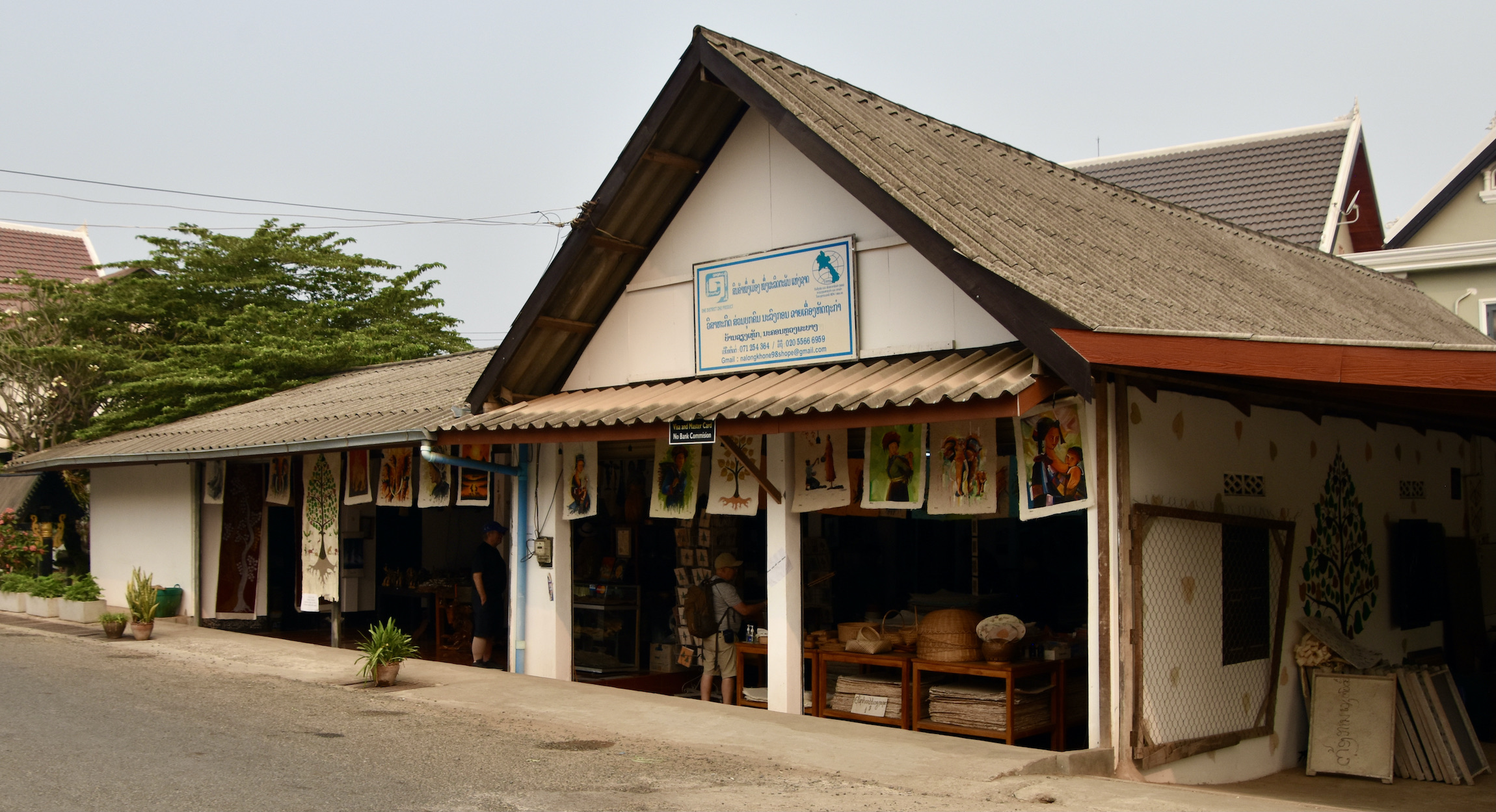
After breakfast at the hotel we boarded the bus and journeyed a short way out of Luang Prabang to a small village on the Mekong where we would begin our Mekong River cruise. However, Ta, our local guide wanted us to see one of the traditional handicrafts of Laos, the making and decorating of saa paper from the bark of the mulberry tree. I am always leery of these type of stops, but I can say with assurance this was not a tourist ripoff spot, but a genuine saa paper making facility which did offer decorative works at very reasonable prices.
This is Ta explaining the process whereby the bark is pounded flat, soaked and then reconstituted into one of the most durable types of paper known to man.
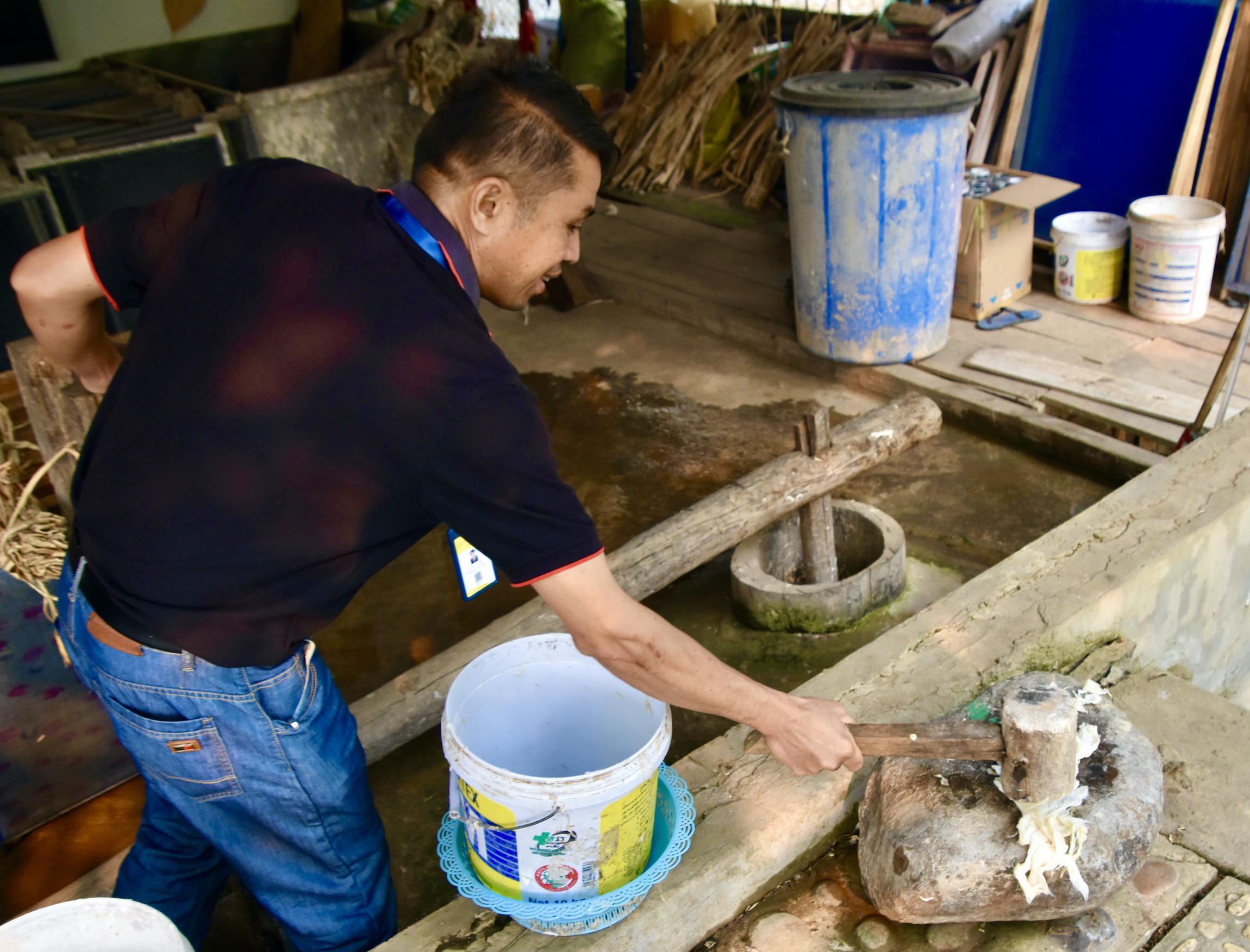
The entire process is done by hand in the same manner as had been done for a thousand years at least. Here rose petals are being placed onto the paper before it is dried.
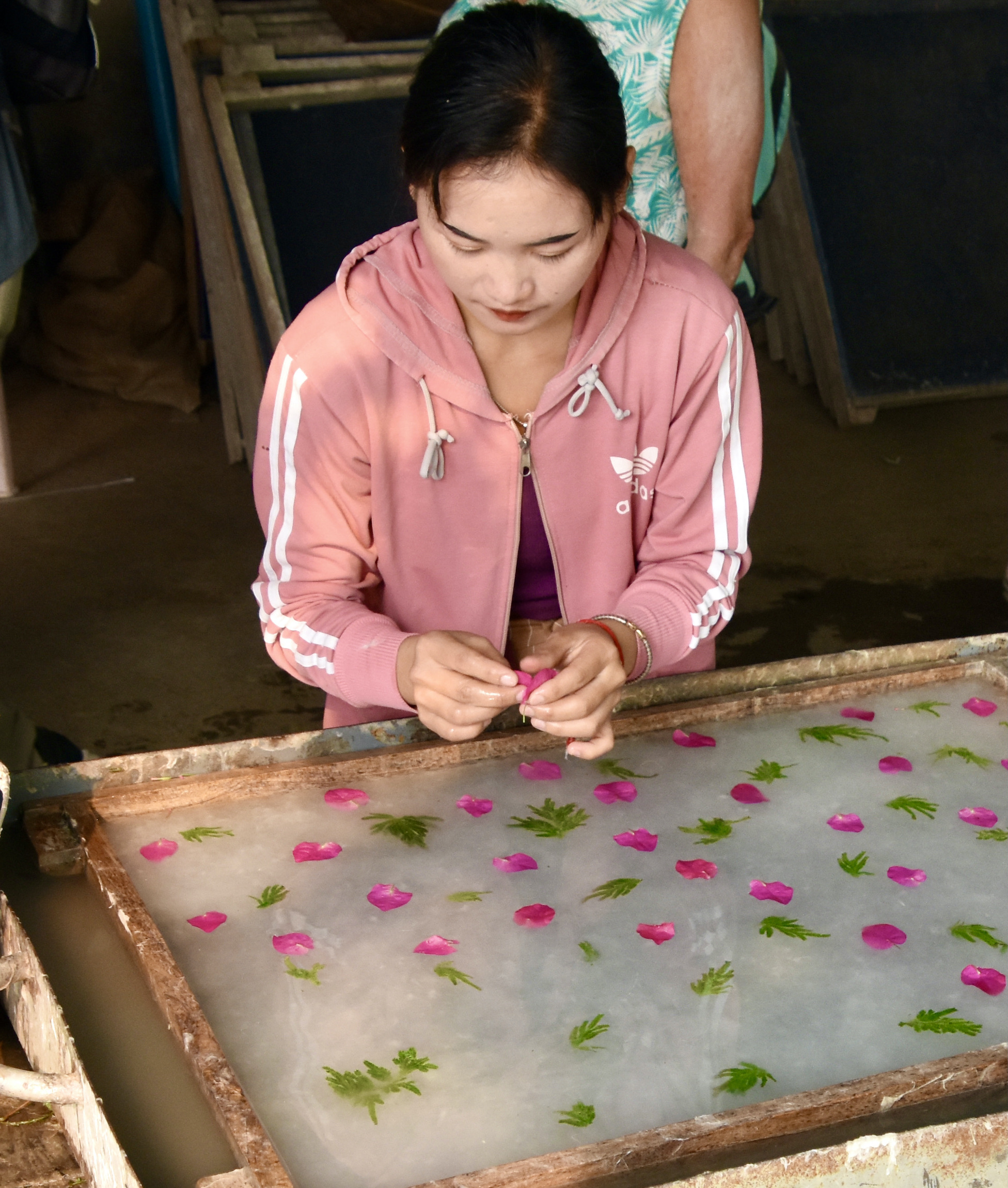
With a finished product that looks like this.
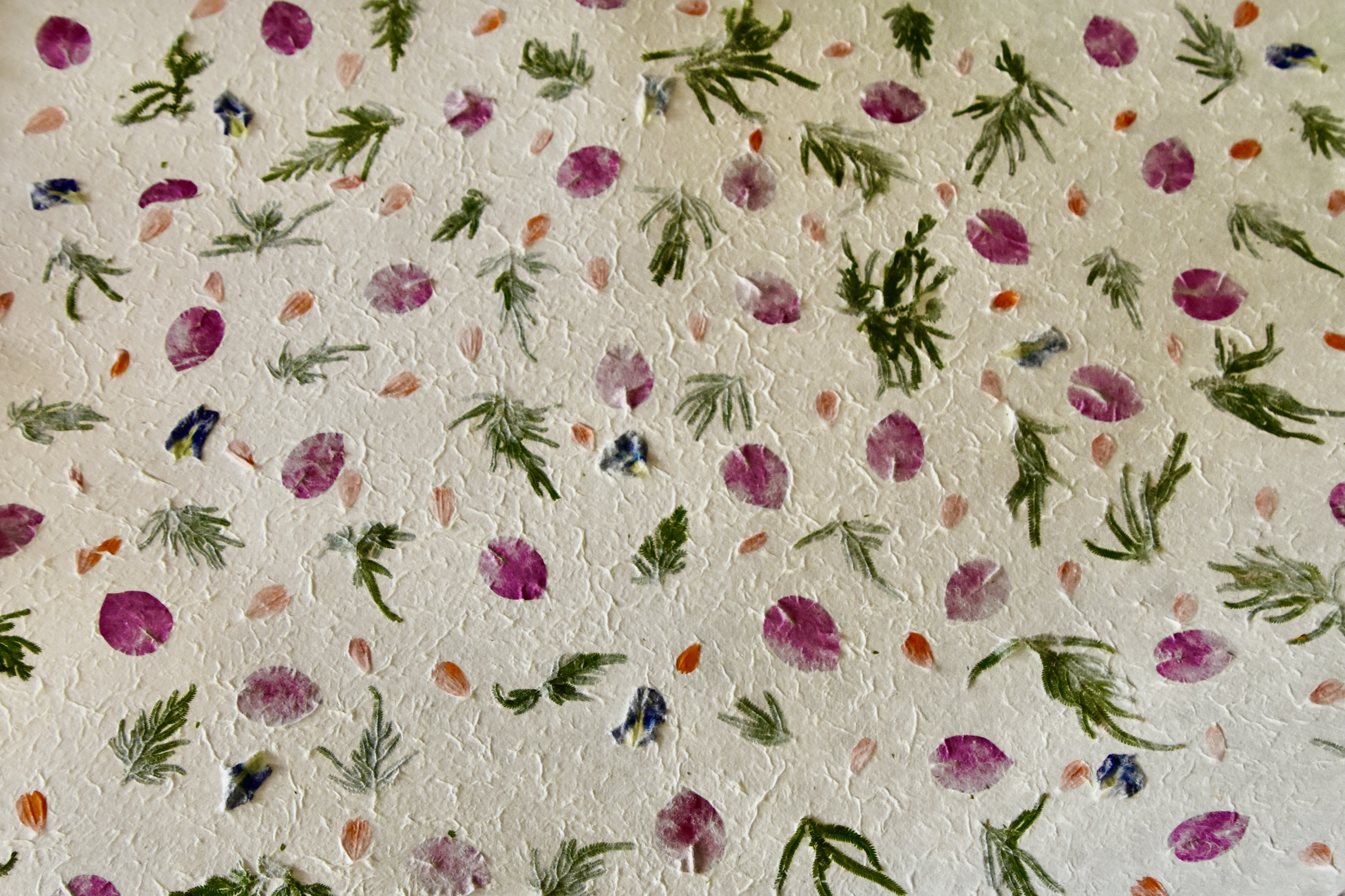
Or the paper can be decorated by hand after it is dried. This artisan is meticulously painting a Tree of Life, one of the most important symbols in the Buddhist religion.
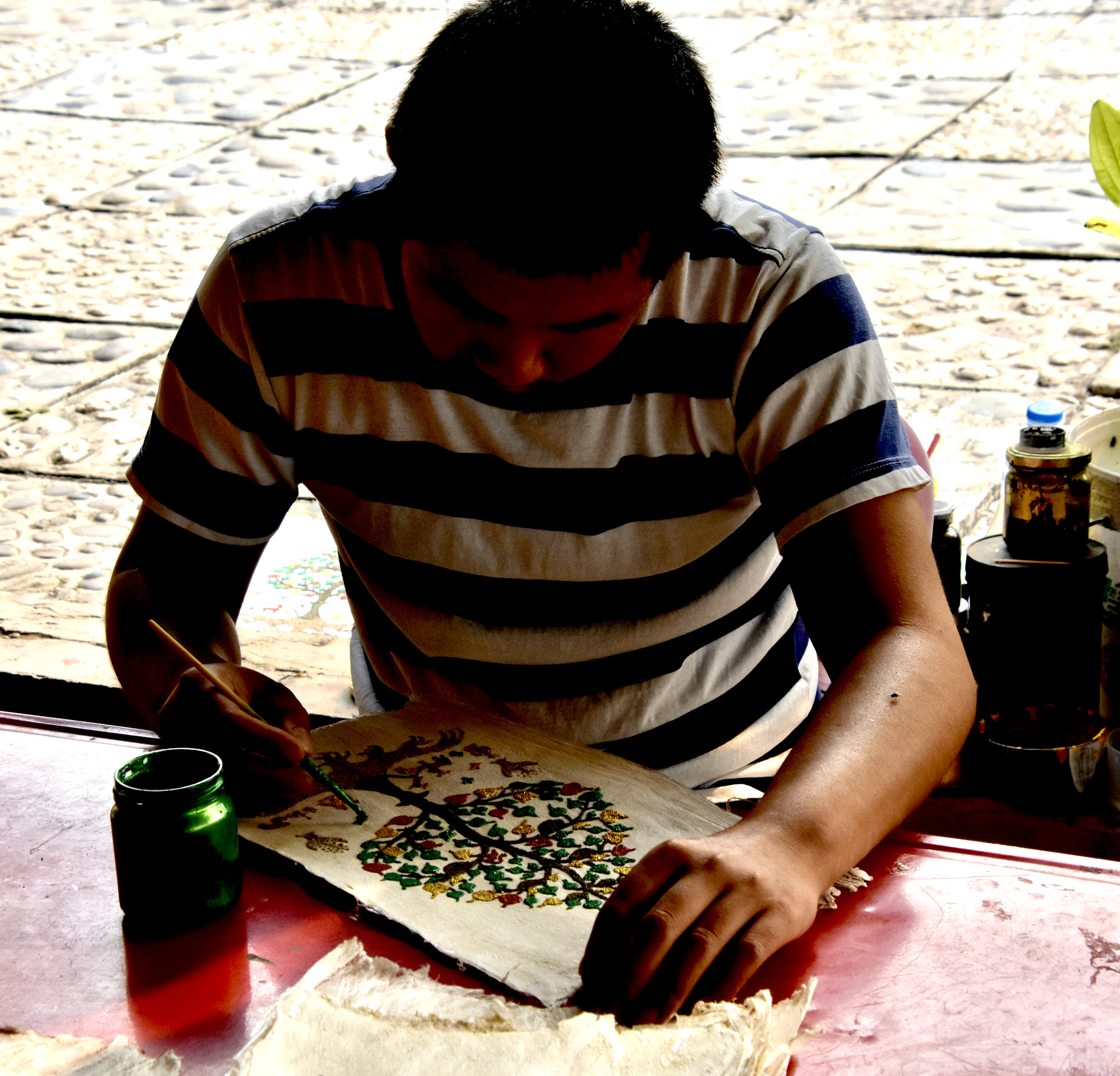
I was so impressed that I bought a signed finished copy which is now part of the many fine handicrafts we have brought back over the years from these Adventures Abroad tours.
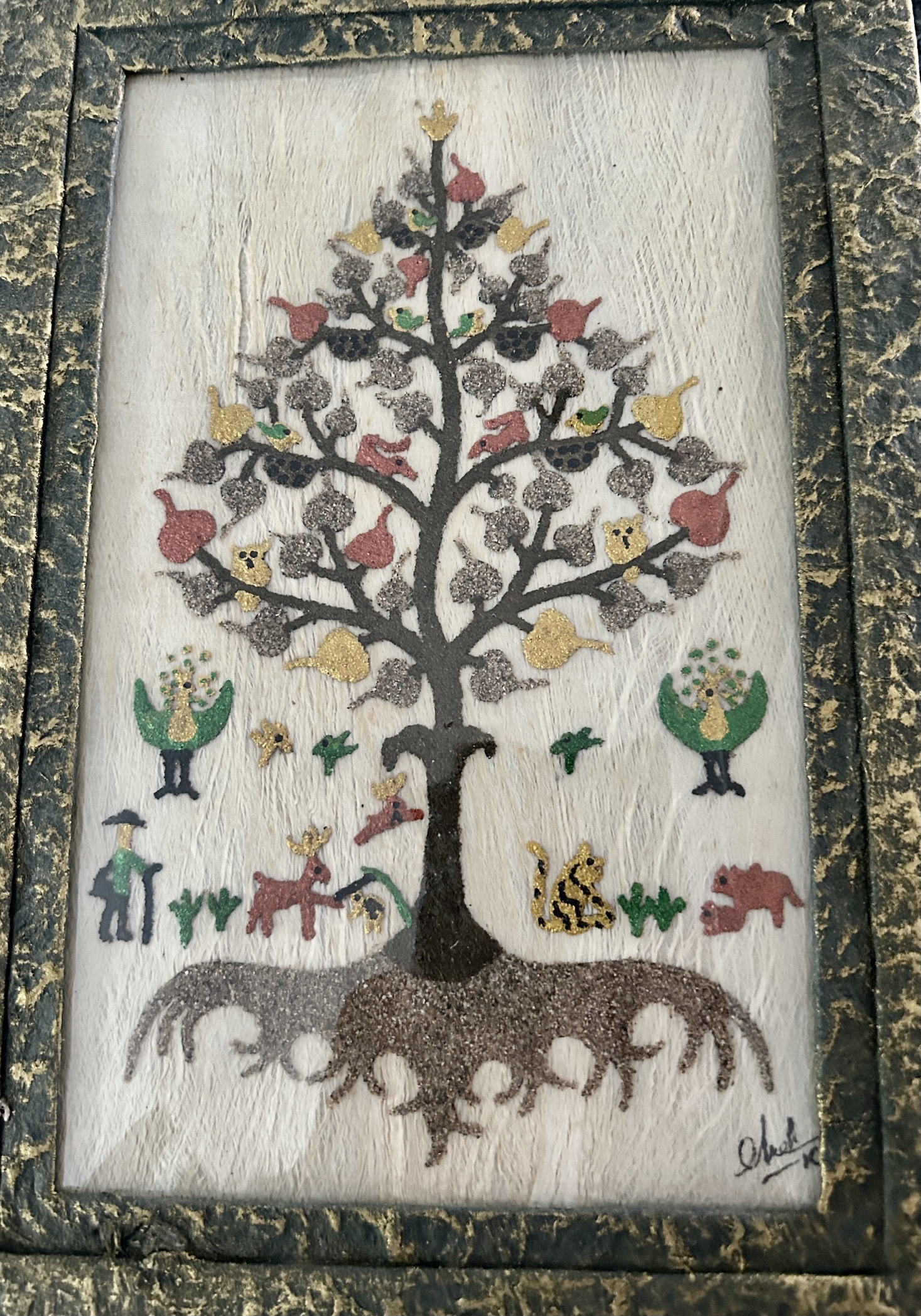
Mekong River Cruise
After leaving the paper shop we walked a short distance and took a flight of stairs down to our boat which was one of three tied up on the riverbank. These boats are owned by families who essentially live on them. Ever since Covid times have been very tough for them and only in 2023 are the tourists returning to Laos in any appreciable numbers.
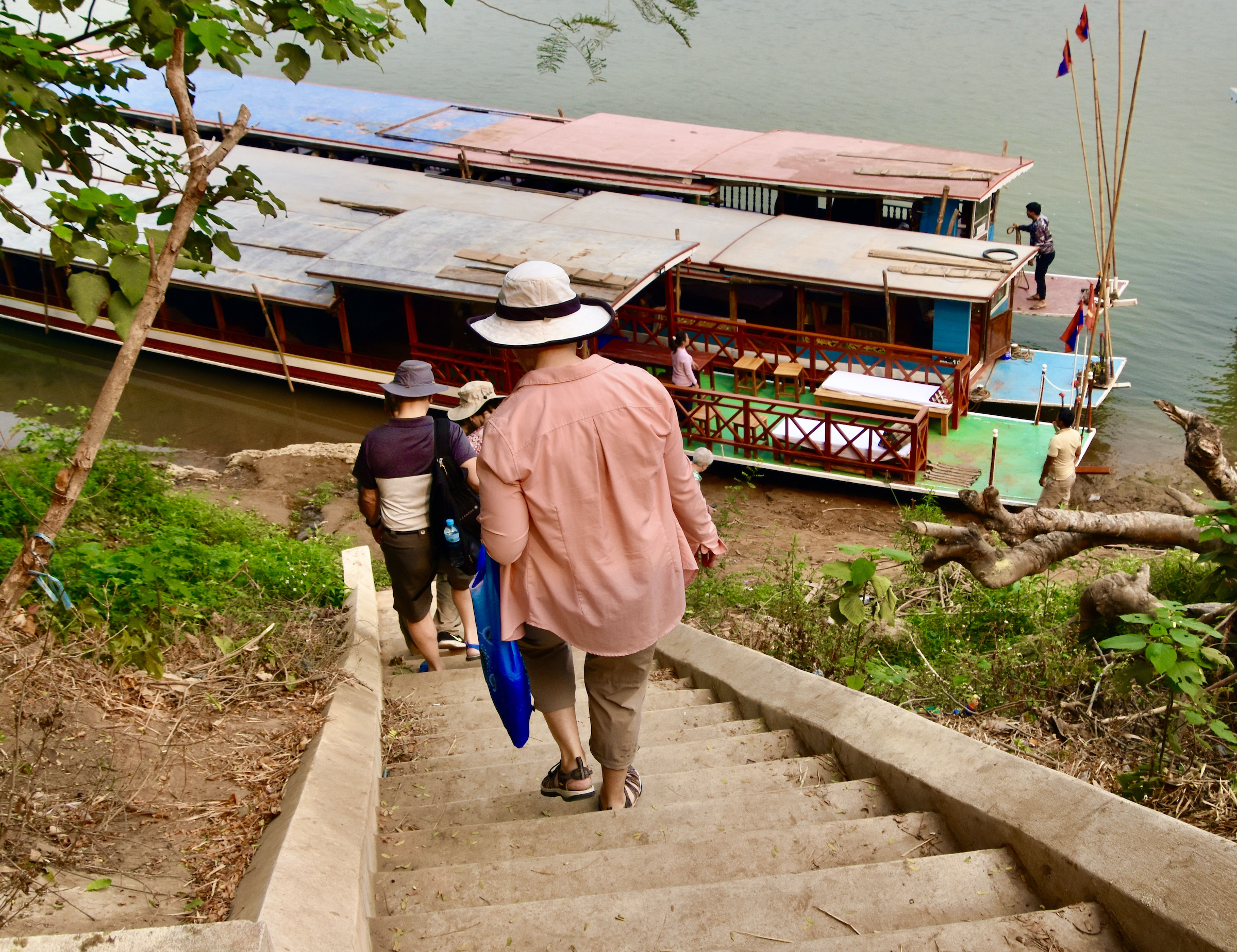
The Mekong River is the third longest in Asia after the Yangtze and Yellow in China, but arguably more important because unlike the other two which are confined to one country, the Mekong after flowing out of Tibet passes through every country in southeast Asia. We will see it not only in Laos, but in Vietnam and Cambodia as well. It is notable for its incredible biodiversity with over 20,000 species of plants, 430 mammals, 1,200 birds, 800 reptiles and amphibians and 850 freshwater fish species including some of the largest fish on the planet. New species in all categories are found on a regular basis. Unfortunately, it is also notable for the deleterious effects that mankind has wrought on this ecosystem from erosion caused by slash and burn agriculture, by excessive deforestation and by the side effects of the many dams that have been built on it. The section in northern Laos that we will traverse today is considered to be one of the less polluted and despoiled on the Mekong River’s 4,909 km. (3,050 mile) journey from the Himalayas to the South China Sea.
As I mentioned in my introductory post on Laos, our AA guide Claude Morency is an avid , no make that rabid fisherman who has brought along his own tackle and gets it ready as we prepare to cast off.
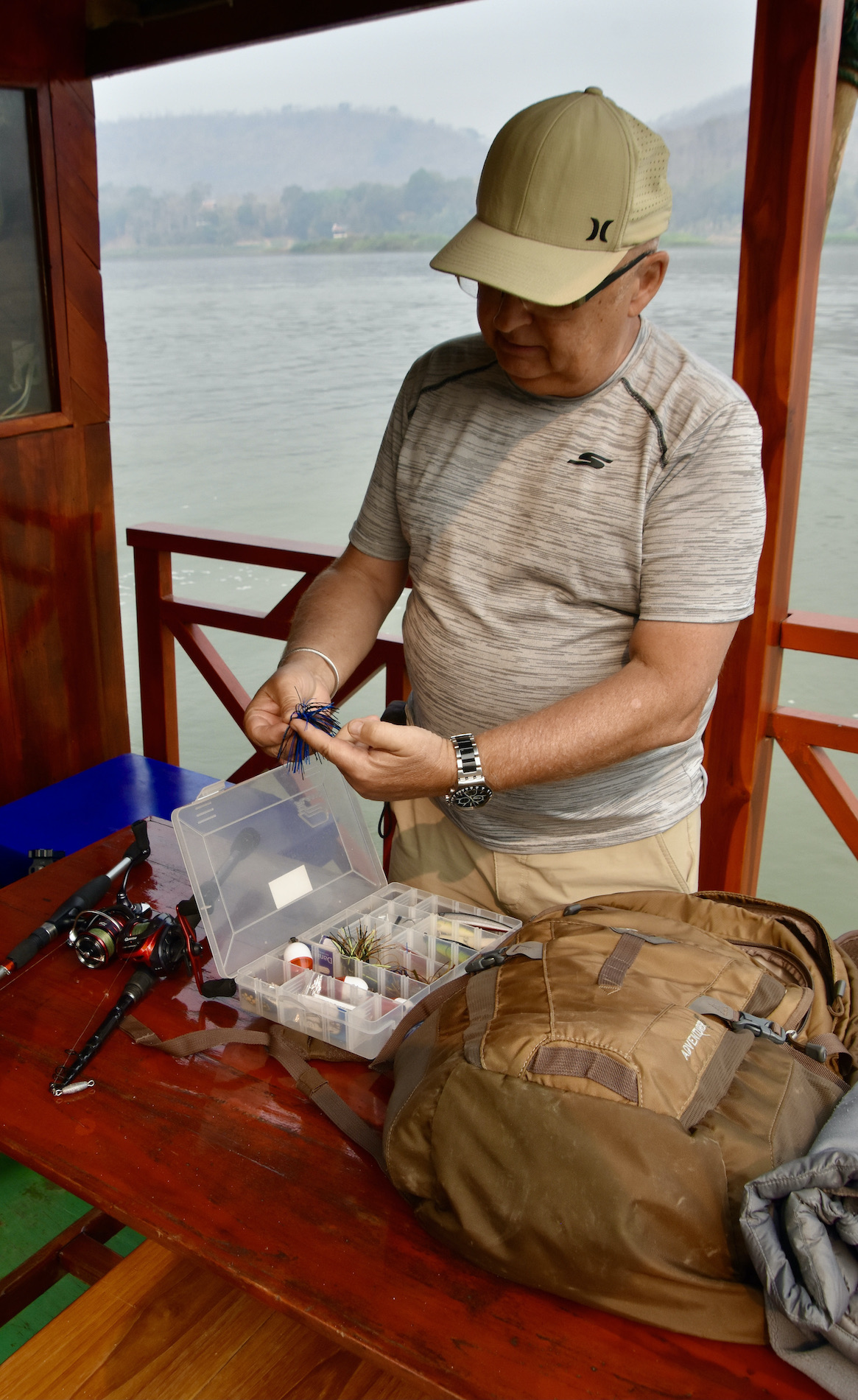
The Mekong River north of Luang Prabang is quite wide, slow flowing and muddy, much like the Mississippi or the Amazon. The shores are quite verdant and there are a number of very large houses overlooking the riverbank that date from the French colonial period, but with distinct Laotian architecture.
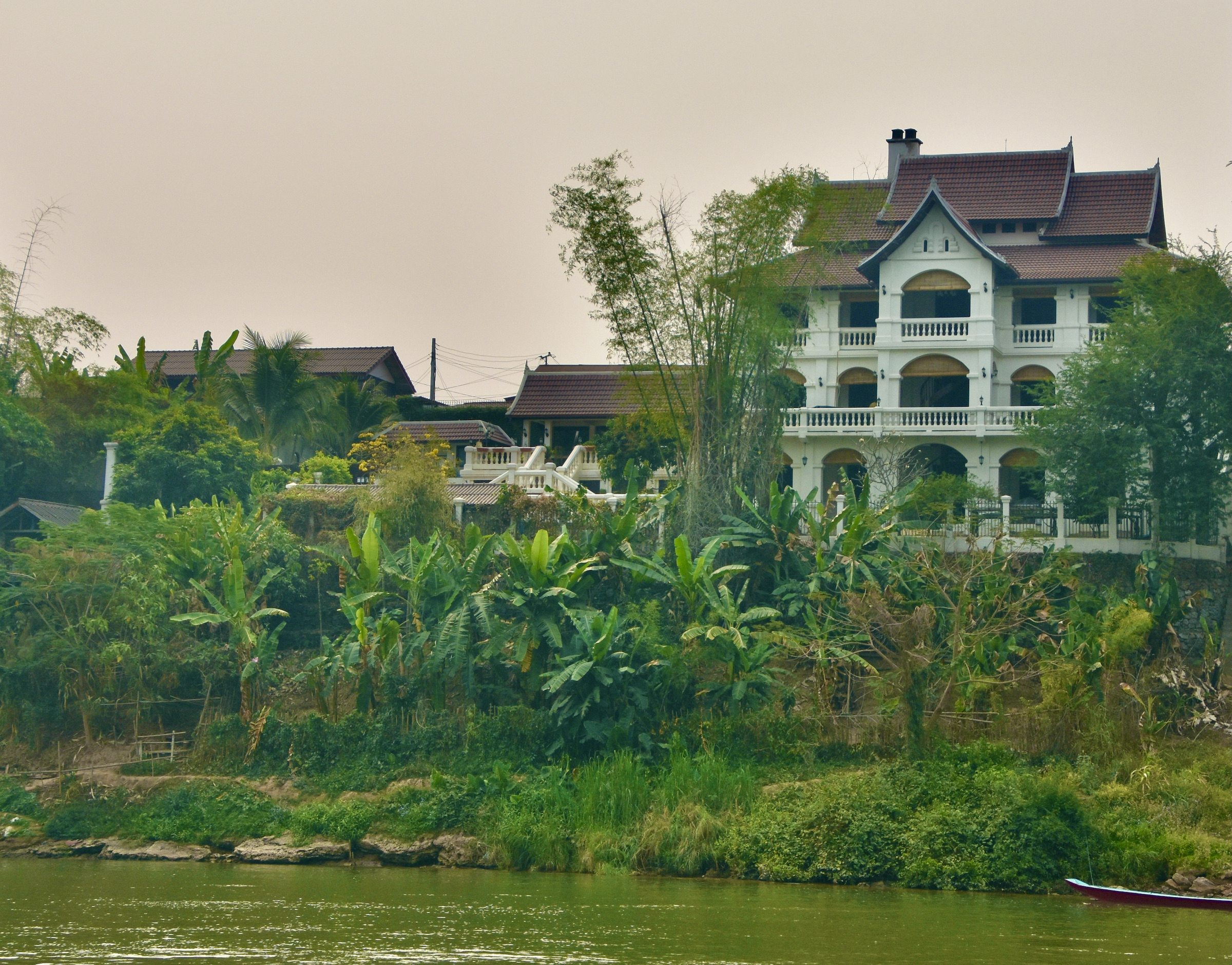
It doesn’t take long to leave most traces of the 21st century behind and we are soon looking at life as it has been lived on the Mekong River for thousands of years. There are solitary fishermen using hand lines to hook one of the 850 species of fish that might lurk under the water including the world’s largest sting rays.
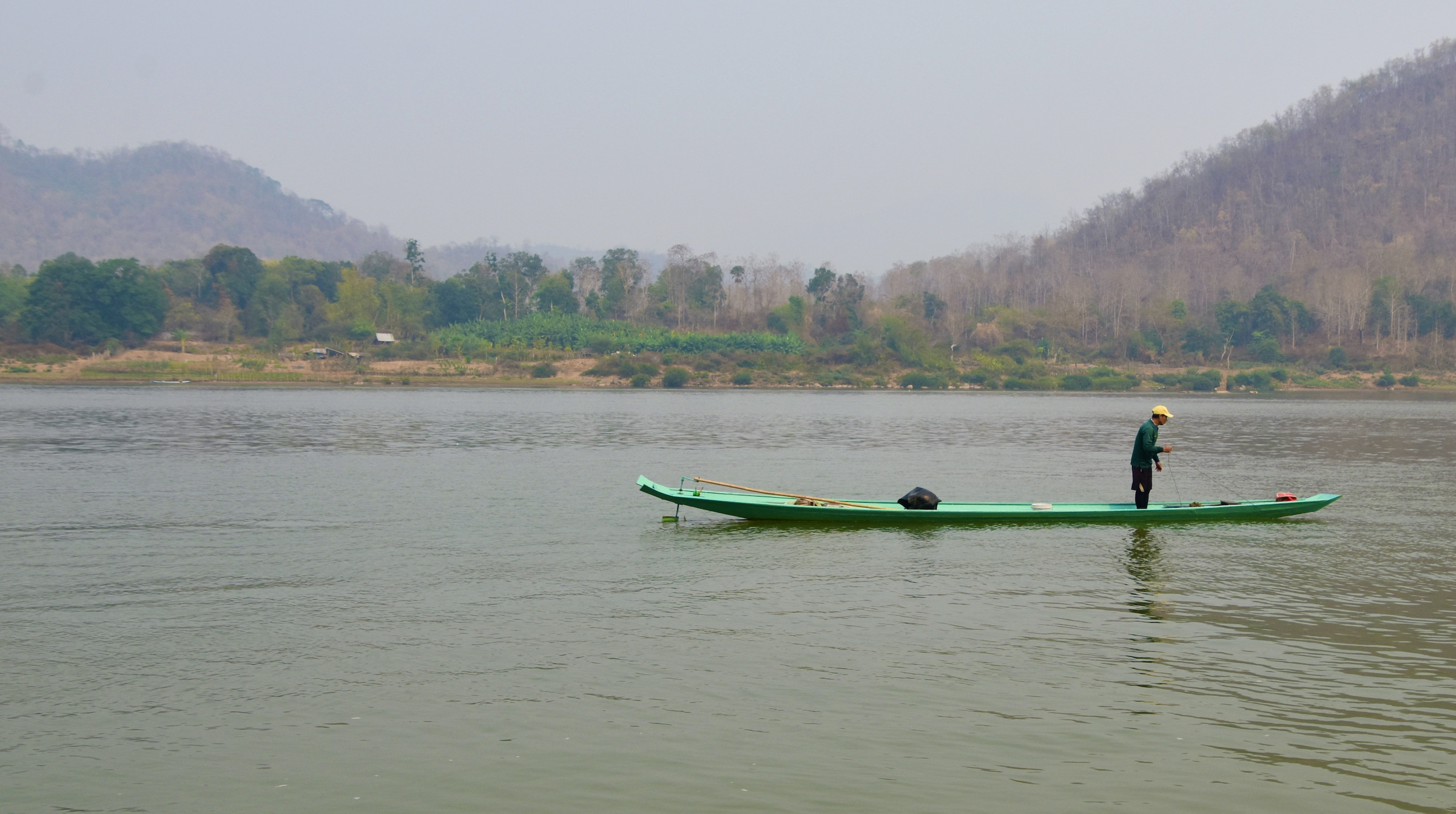
These are seasonal huts that the fishermen live in when the water is low enough that they can set up camp on the riverbank.
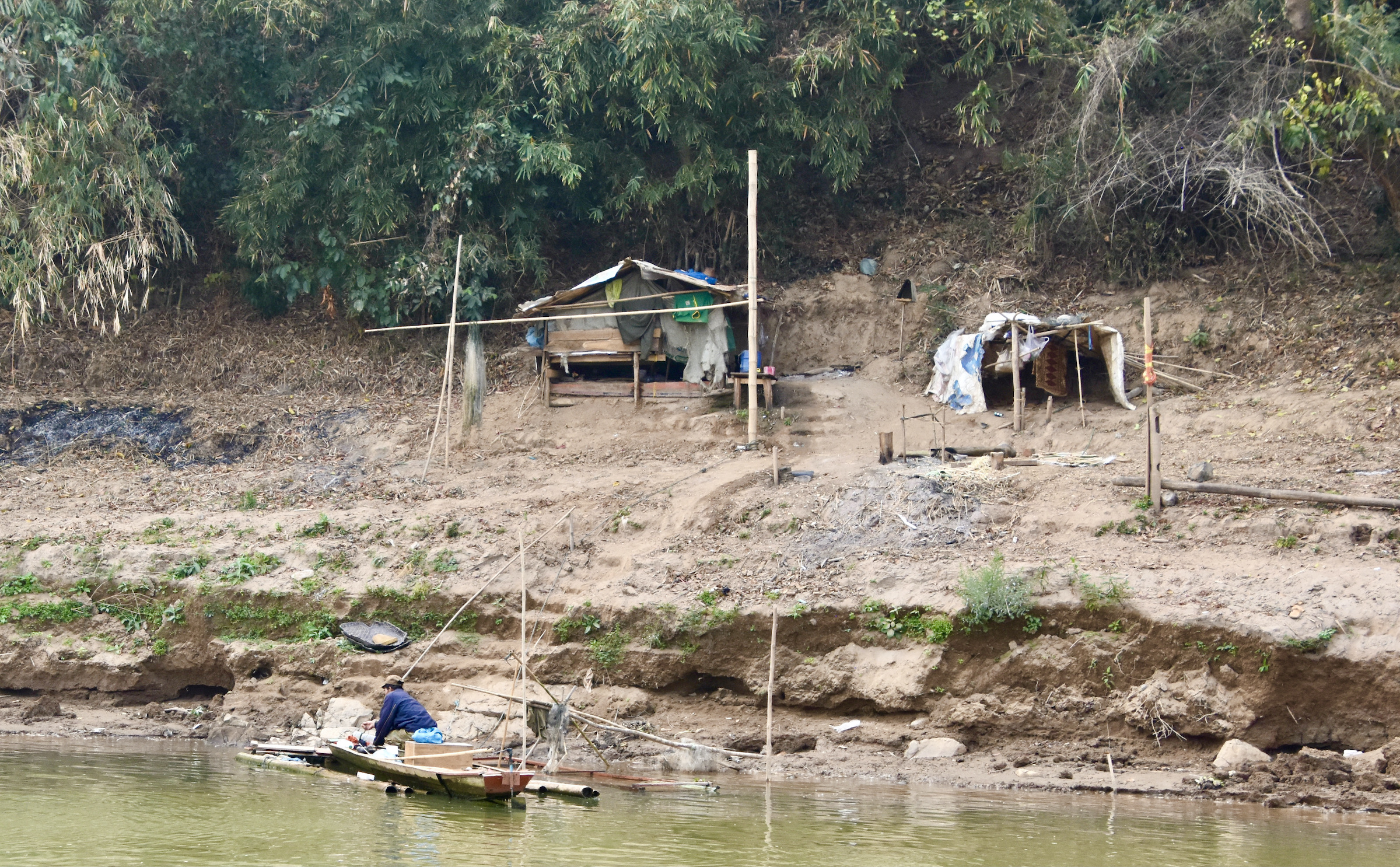
We get a good look at this man in his dugout and he stares back, but I have no idea what he is doing or what’s inside those two baskets.
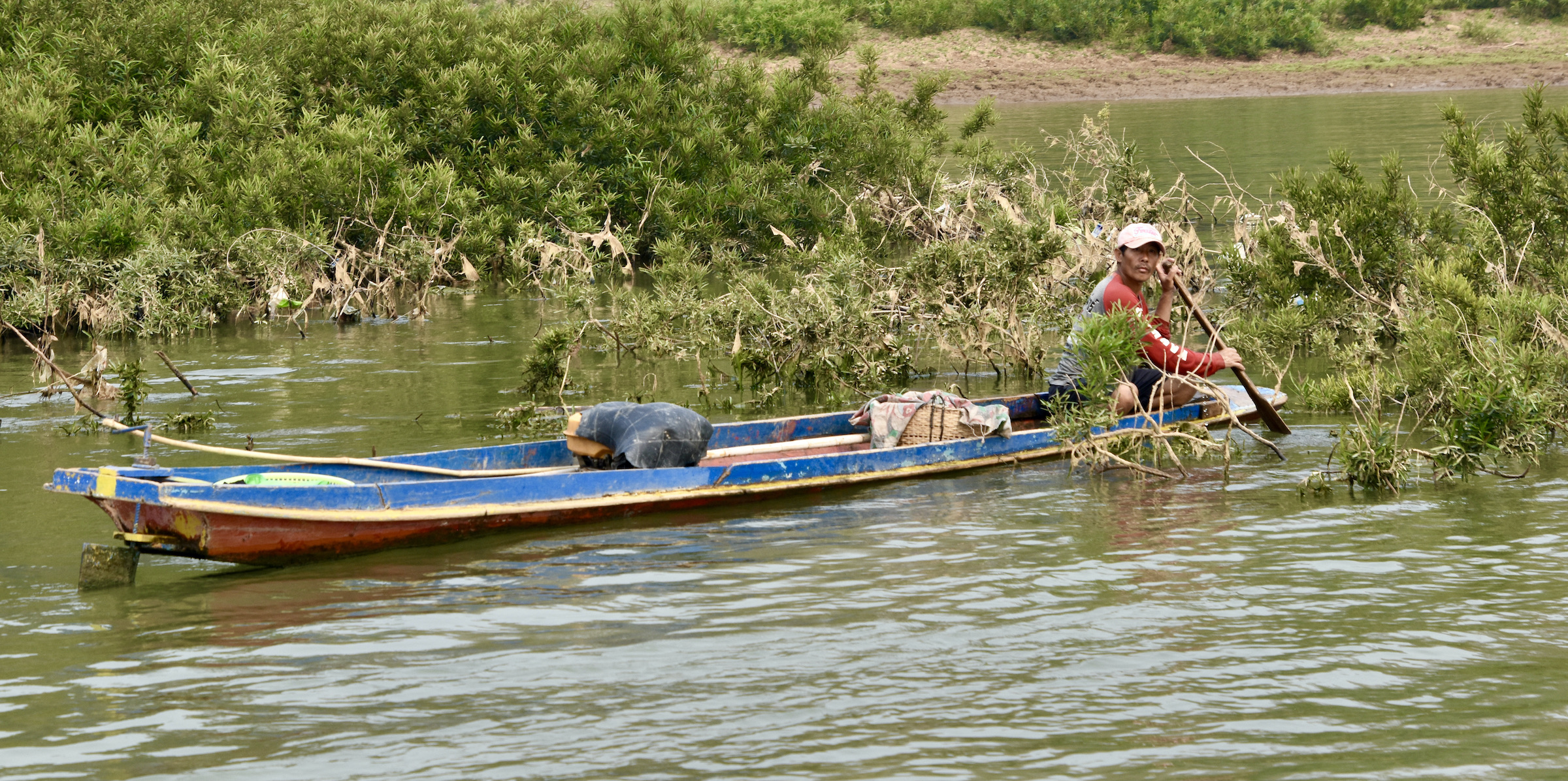
Just when it seems we are getting a glimpse into the past on this Mekong River cruise, the present jolts us back to reality. This is the newly opened bullet train railway between Kunming China and Vientiane Laos. Instead of taking days to travel by car or bus, the journey can now be accomplished in just over 10 hours. If not for Covid, this would be bringing thousands upon thousands of Chinese tourists to Laos and no doubt that is what the future portends once China fully opens the tourism floodgates once again. The photo also is a good illustration of the almost permanent haze that covers the Laotian landscape due to the slash and burn agriculture practised in much of the country.

With the bridge behind us the countryside reverts to its more traditional appearance. These are seasonal gardens taking advantage of the rich soil deposited every year as a result of the monsoon rains.
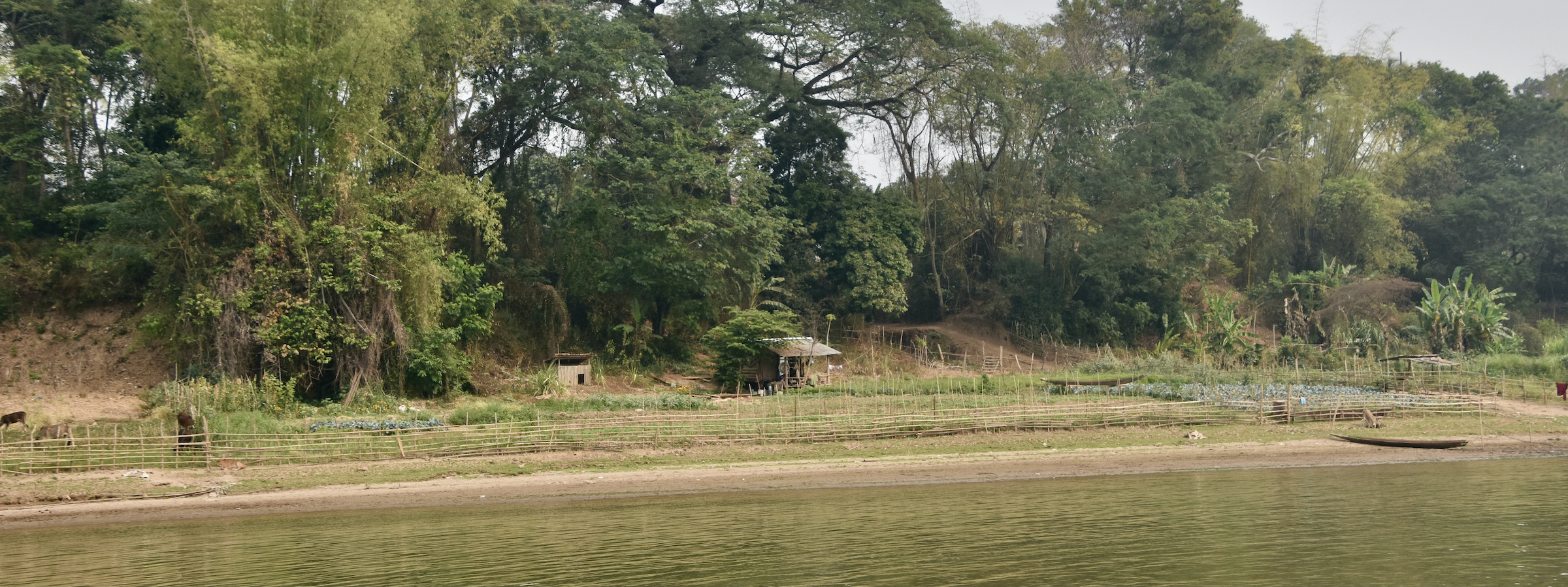
This is a tilapia farm. The tilapia is one of the easiest and most profitable fish to grow as they eat almost anything, grow like weeds and tolerate high density. Not native to southeast Asia, they readily adapt to tropical freshwater conditions almost everywhere. Fish is a major source of animal protein for rural Laotians and these fish farms have been promoted by the government as an alternative to just rice and vegetable production. While open pen aquaculture certainly has its drawbacks, in Laos it appears that the benefits outweigh the risks.
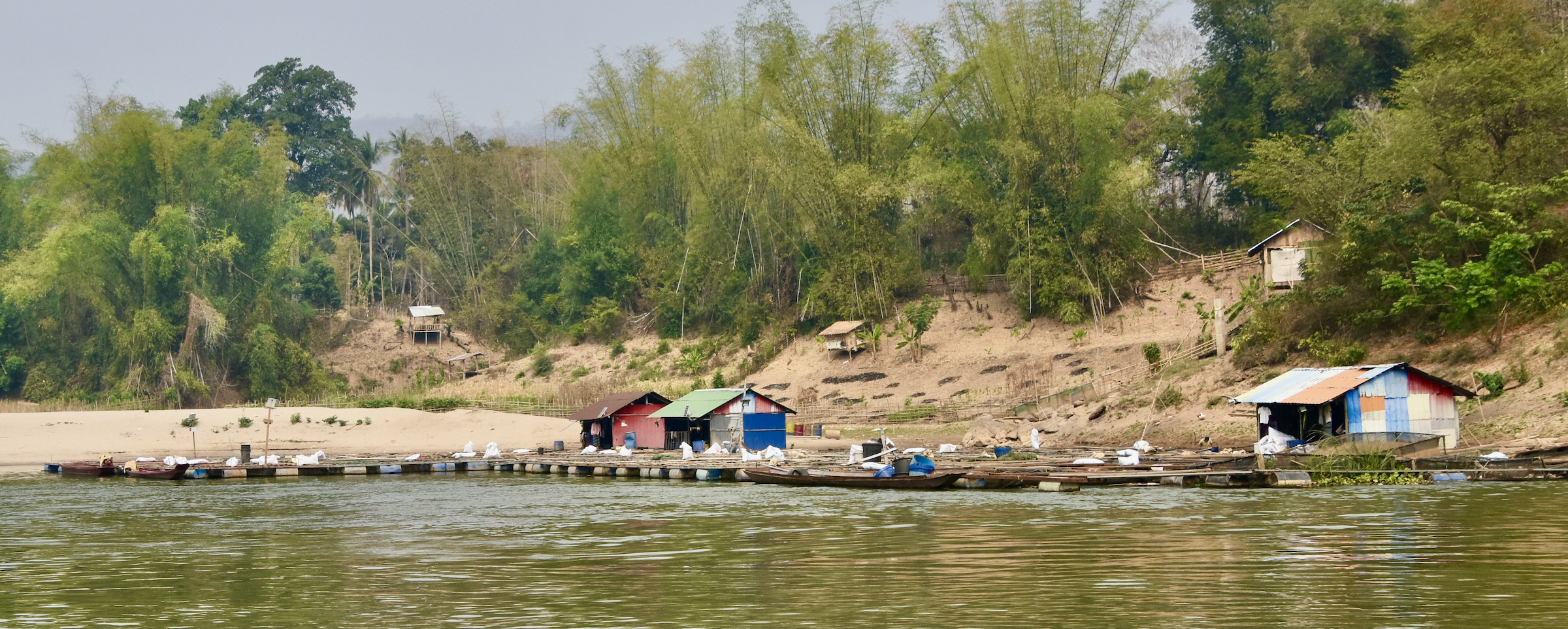
Another source of animal protein and dairy around most of the world are goats which were first domesticated over 10,000 years ago. This herd appears to be on its own as it makes its way along the riverbank in search of food and an occasional dip.
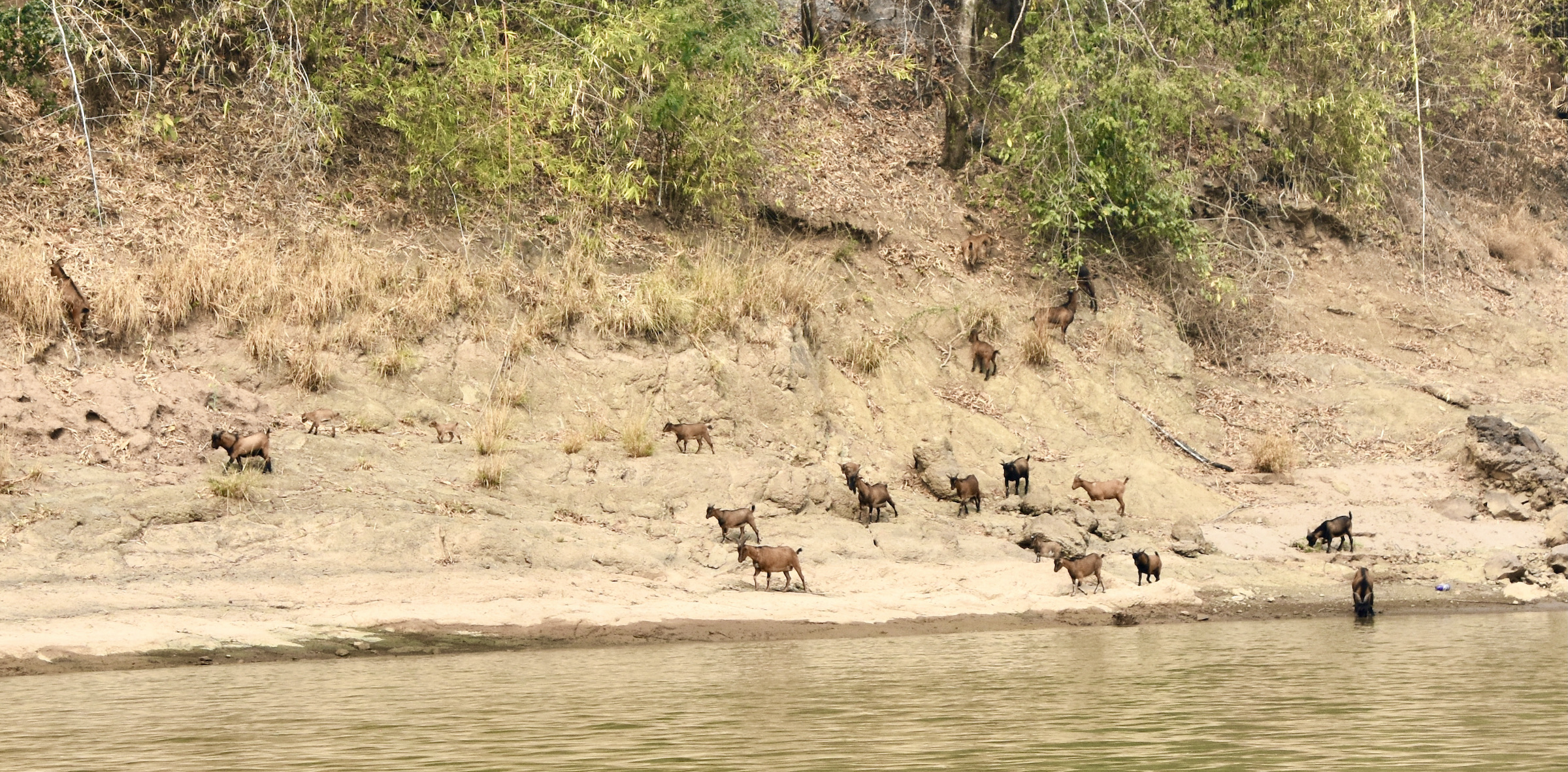
Bang Xang Hai – The Mekong River’s Whisky Village
We now reach our first stop at the village of Bang Xang Hai which is famous for its homemade whisky and textiles. Claude and Ta lead us up the steps to a small open air shop where the local whisky and rice wine are made and sold. There are a number of sizes and varieties on display.
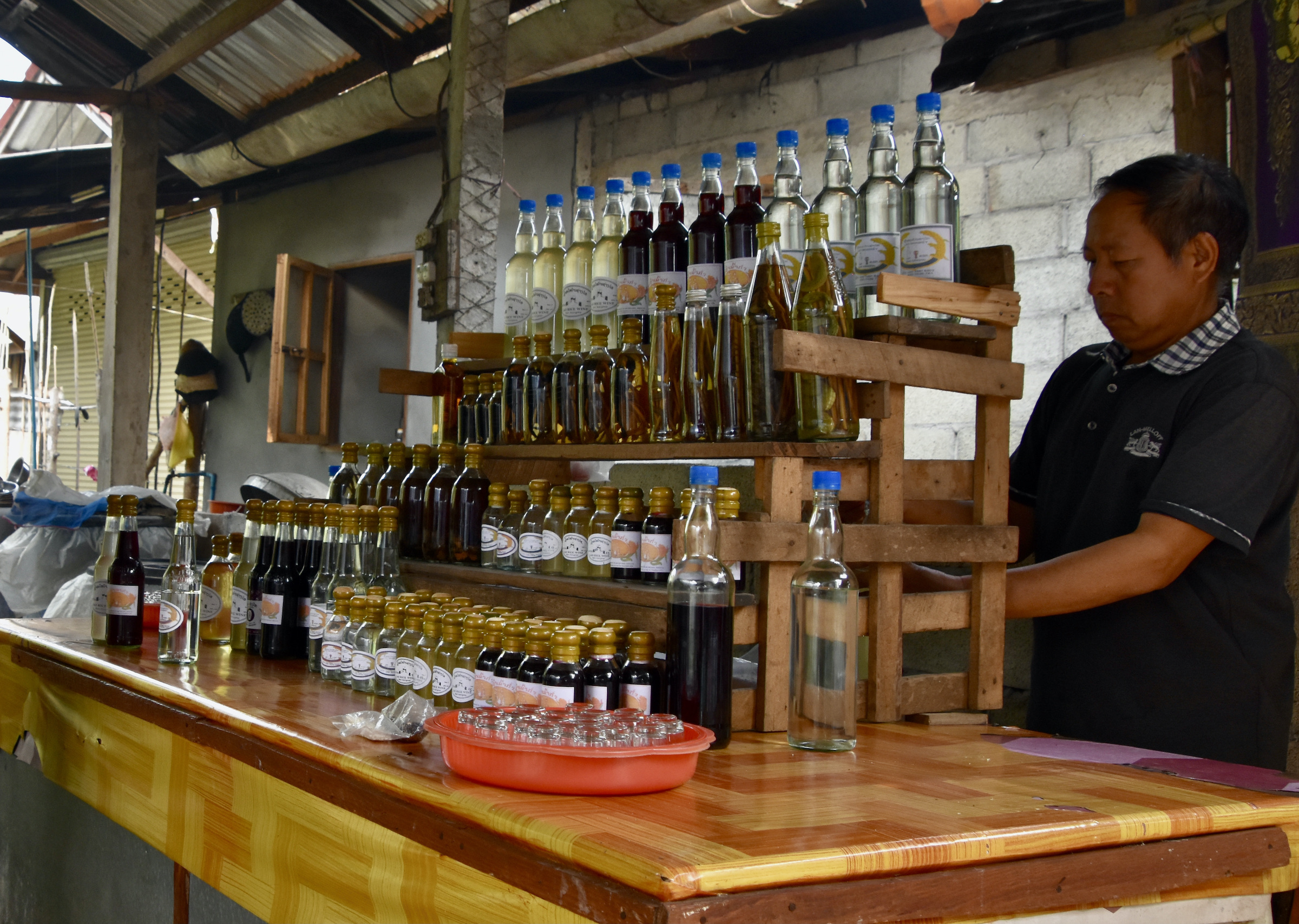
But you need to take a closer look before deciding to try some. Do you want your whisky flavoured with scorpions?
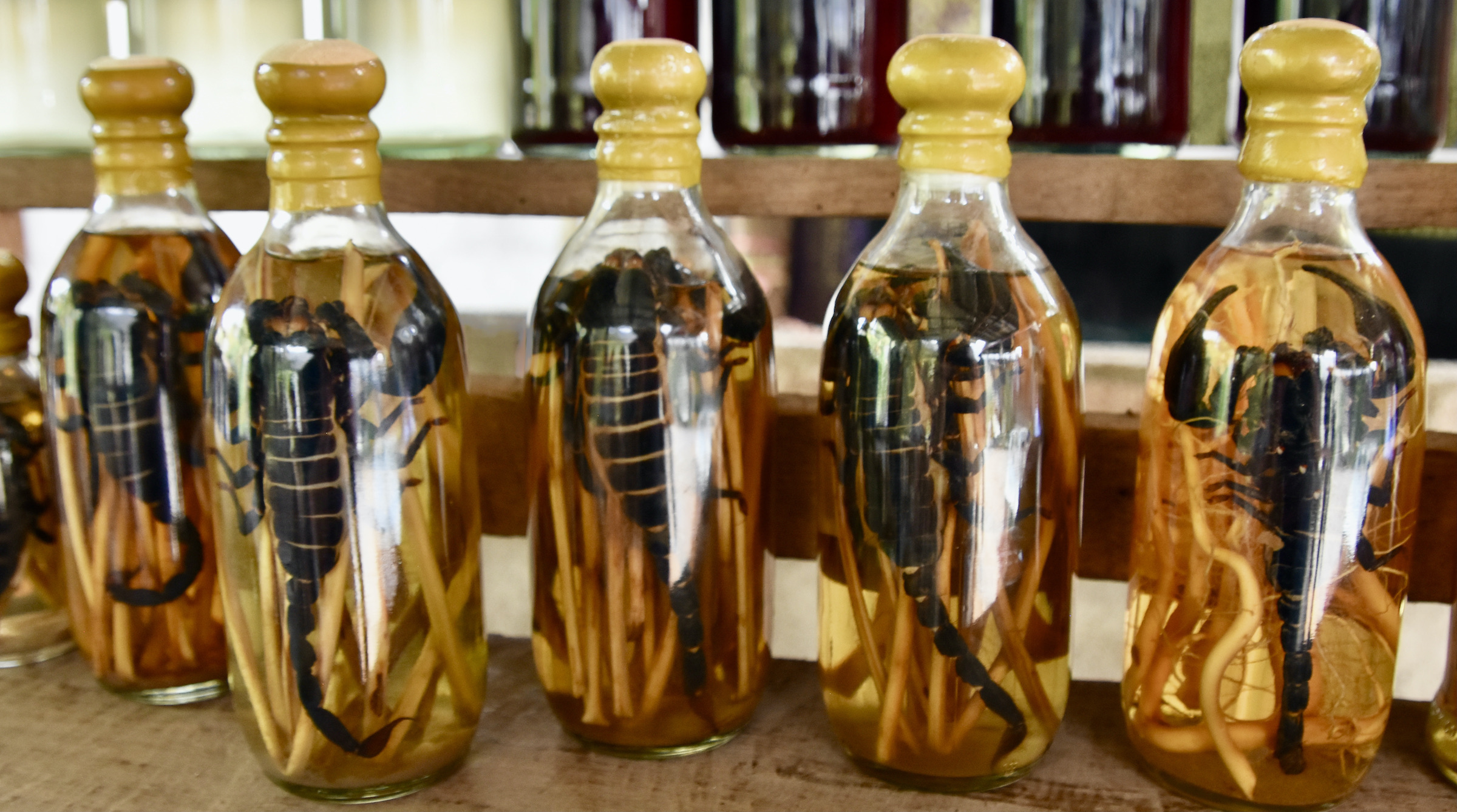
How about poisonous snakes? No, but maybe centipedes will do the trick. The tradition of putting venomous creatures into wine or fermented alcohol wine goes back thousands of years in Chinese medicine and is believed to have positive health benefits. That seems oxymoronic if not just moronic, but who am I to judge? One thing I do know is that I would not want to run into one of those scorpions or centipedes outside of a whisky bottle; they are huge.
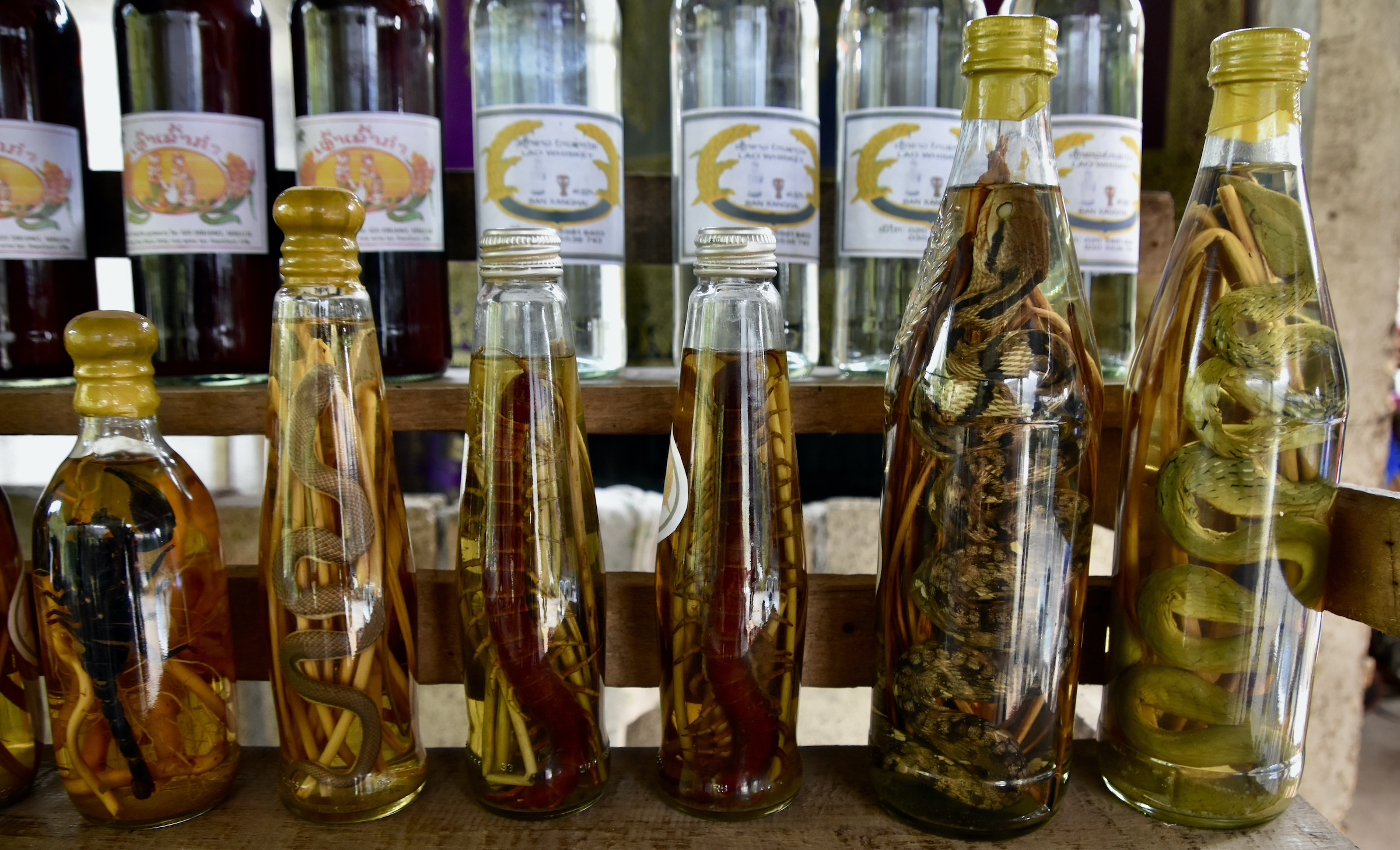
Undaunted Claude and Dennis down their whisky without any ill effects, but no reported health benefits either.
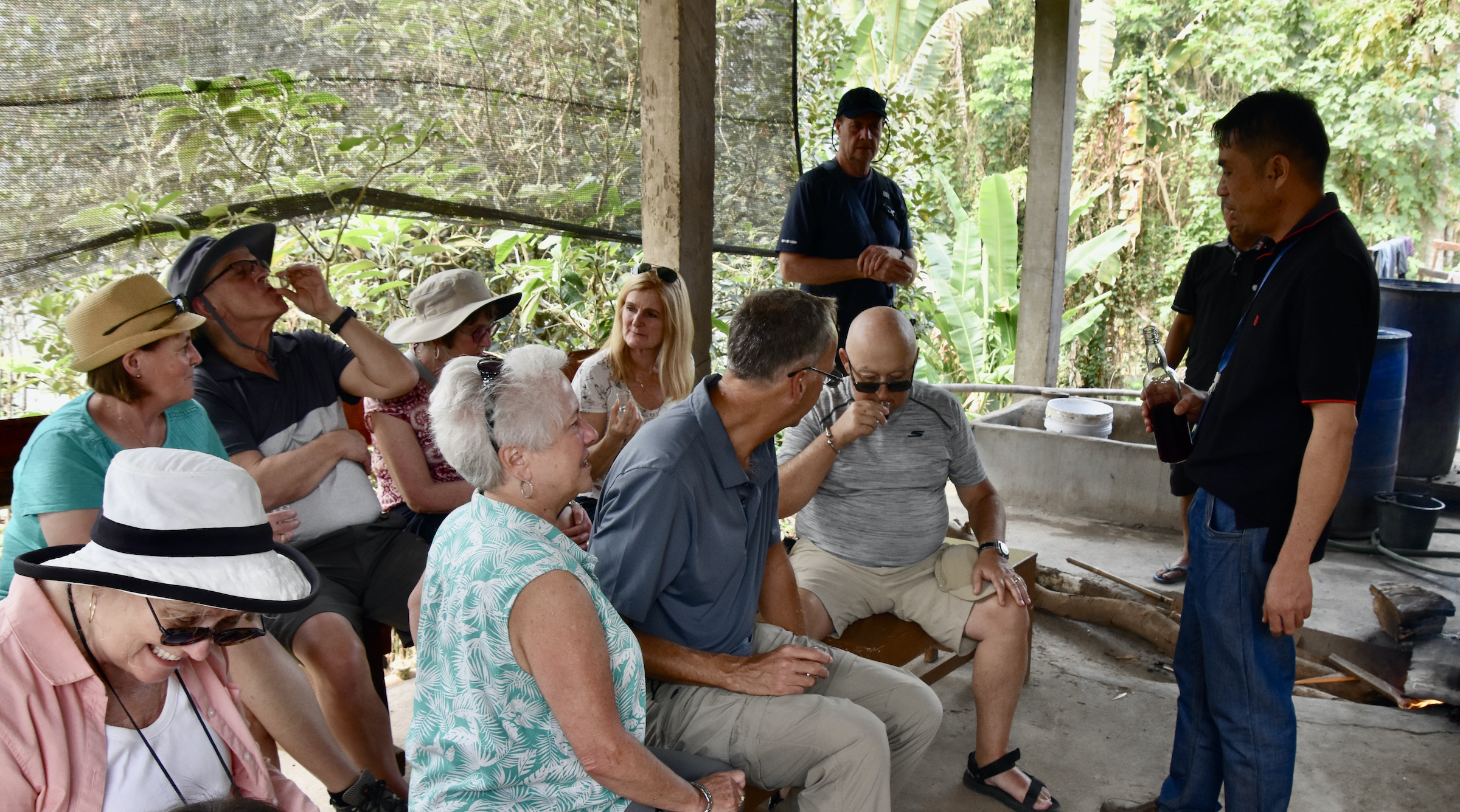
Looking around as an excuse not to try the whisky I spot this beautiful Burmese golden flower cluster not more than a few feet away.
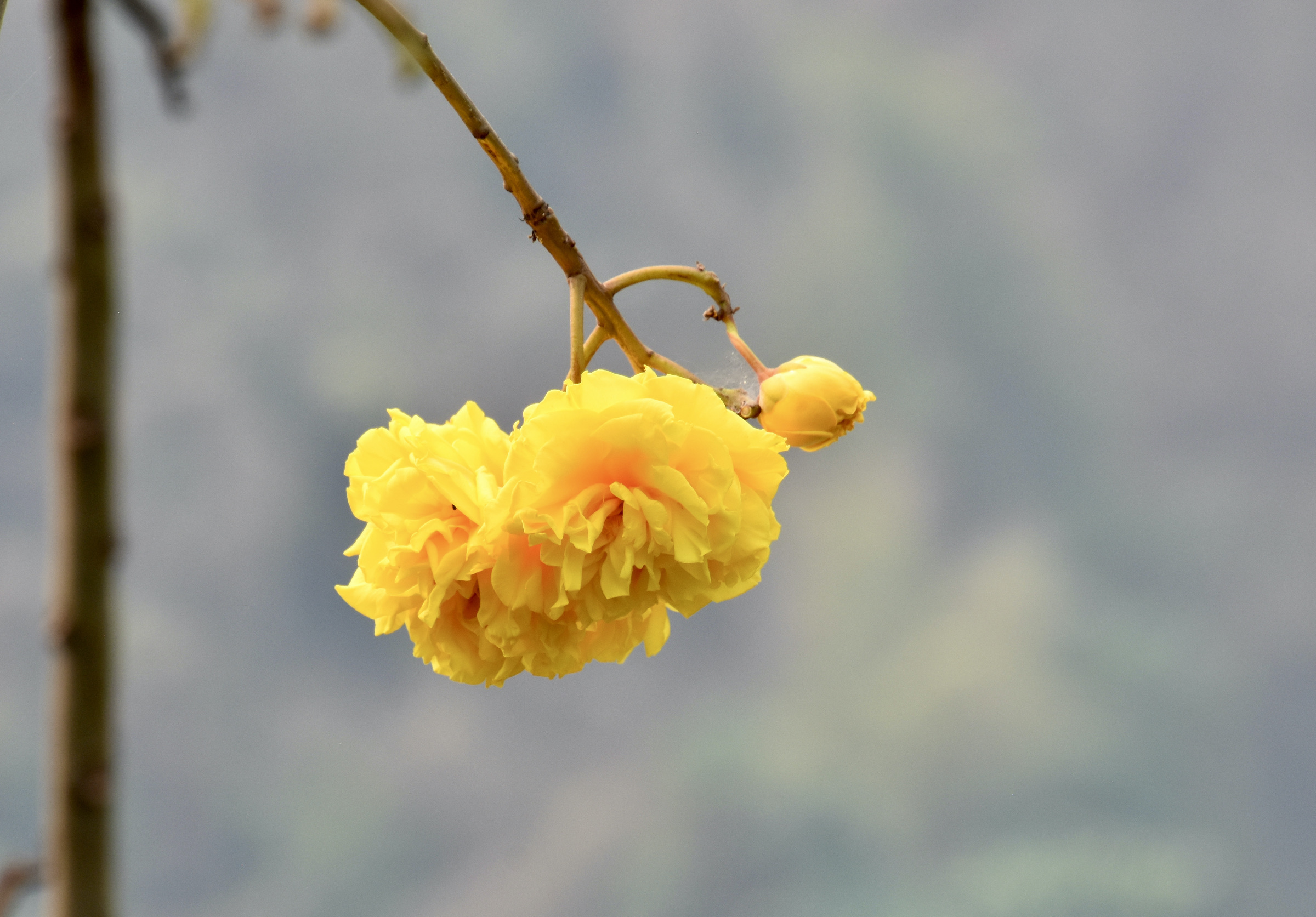
After declining to buy any whisky we have some free time to explore the village starting by passing by the textile sellers. Their wares are truly exceptional and would make a great souvenir from Laos, but I made my purchase at the paper shop and ignore the entreaties to take a closer look. Others don’t and some sales are negotiated.
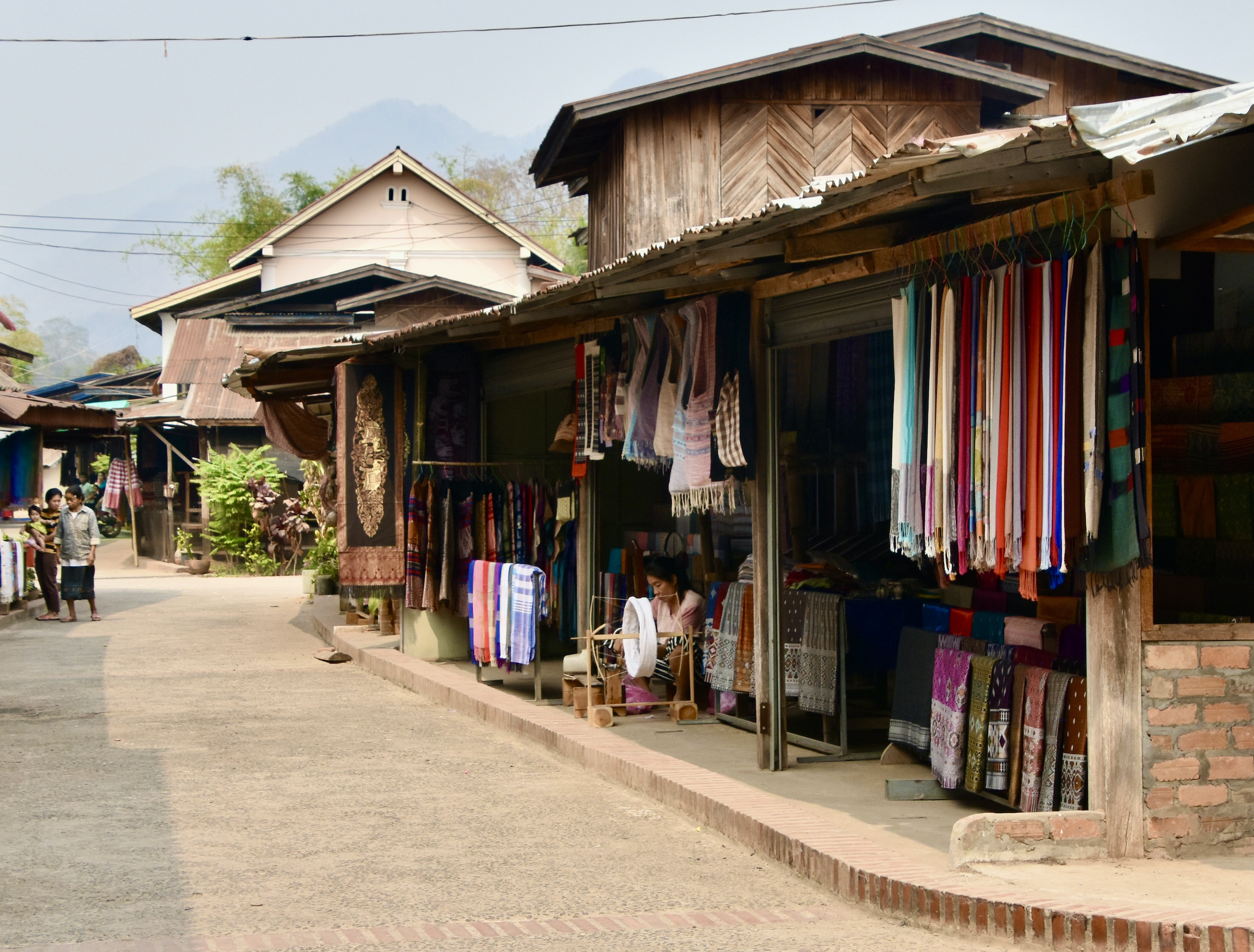
Heading further into the village you come to the religious centre where there are a number of interesting buildings and objects, none more intriguing than this statue of a white monkey. From what I can gather after the fact from Ta is that this village was totally destroyed during the Laotian civil war and when the surviving villagers returned the only living thing was a white monkey. I can’t find any independent verification of this, but it makes a nice story.
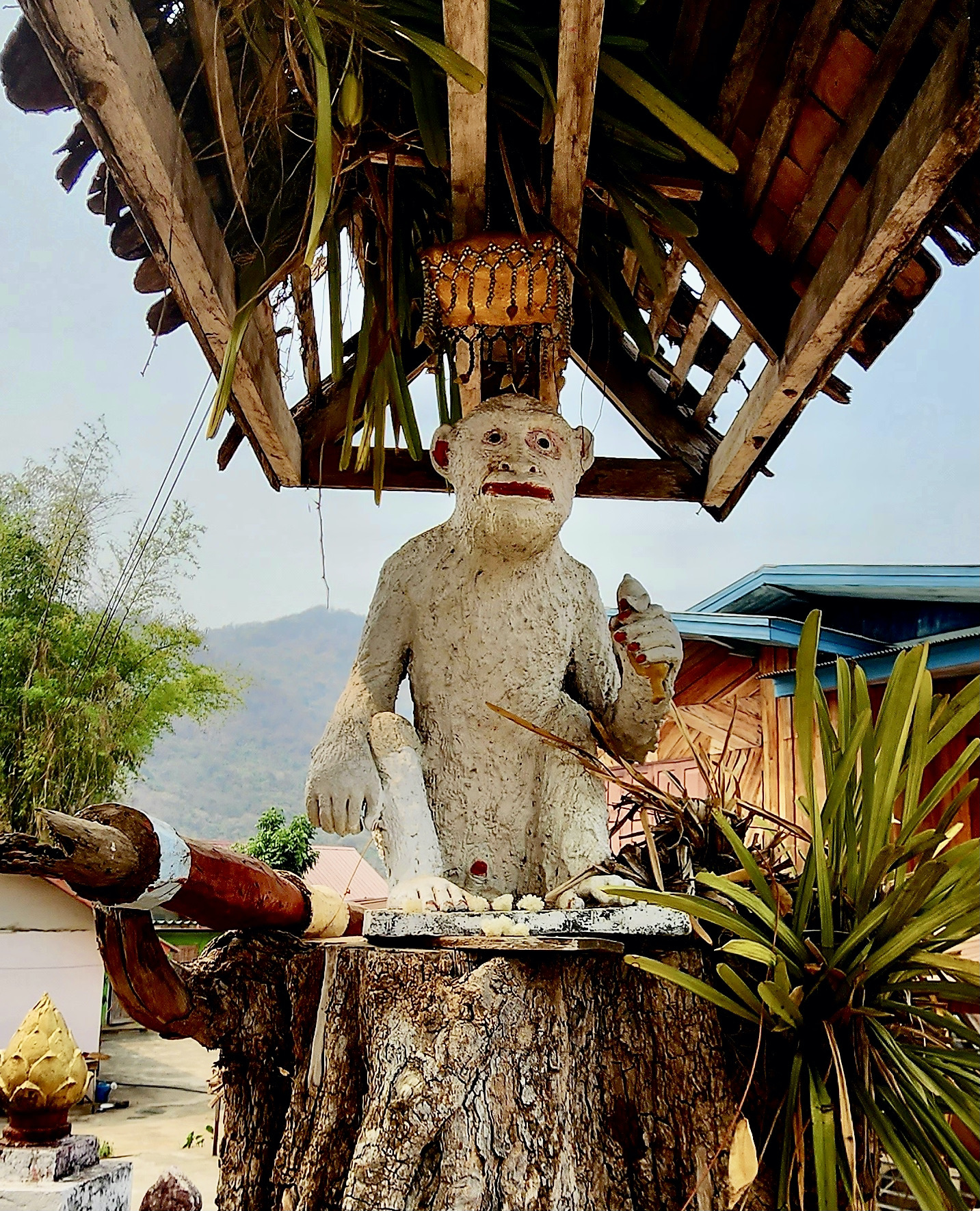
This is the complex as a whole complete with the lucky white elephant which hopefully will prevent a repeat of what happened here during the war.
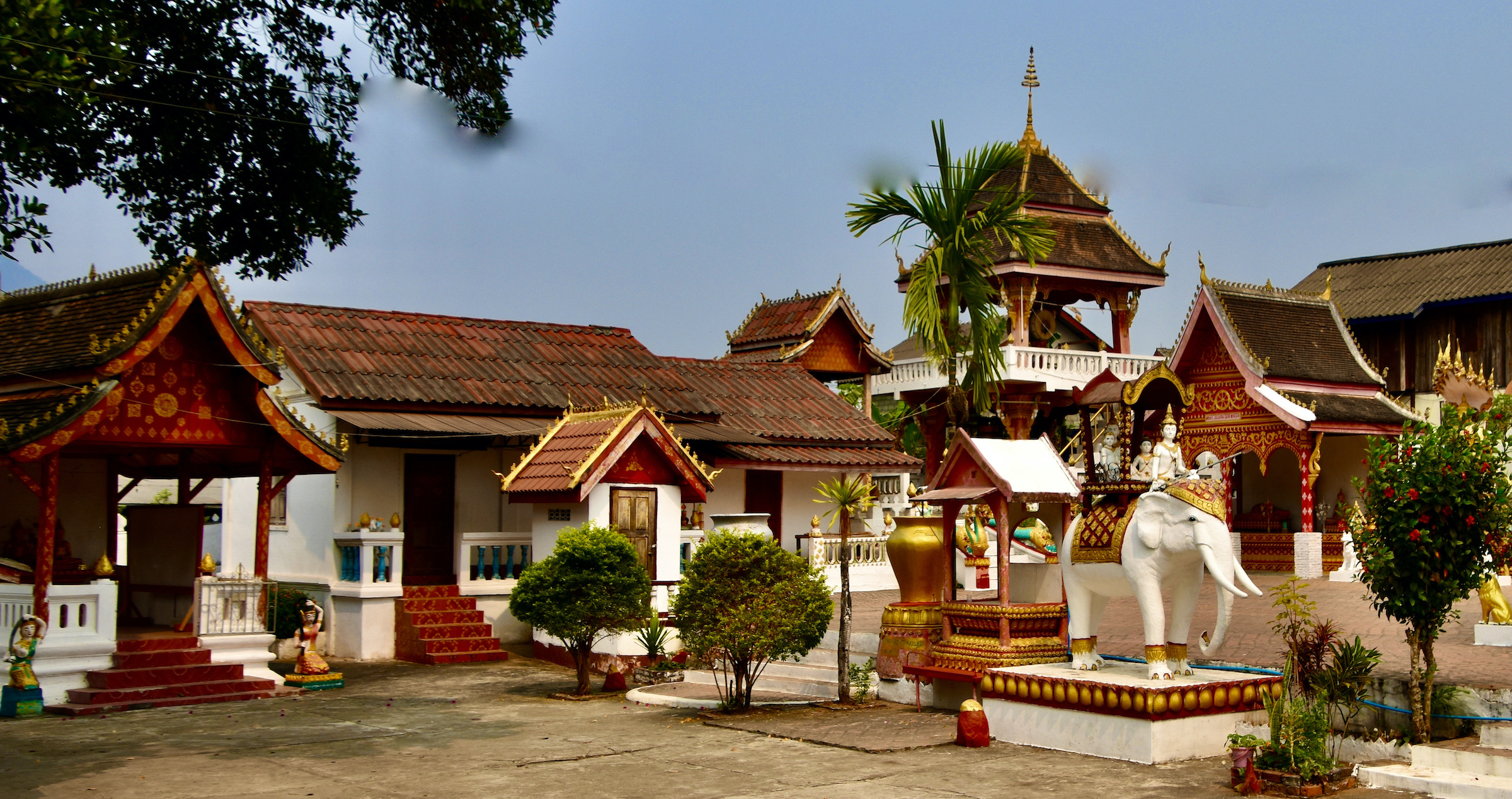
A closer look reveals four golden Buddhas and one white one each with a different animal underneath. I have no idea of what this is meant to represent, but it’s very colourful.
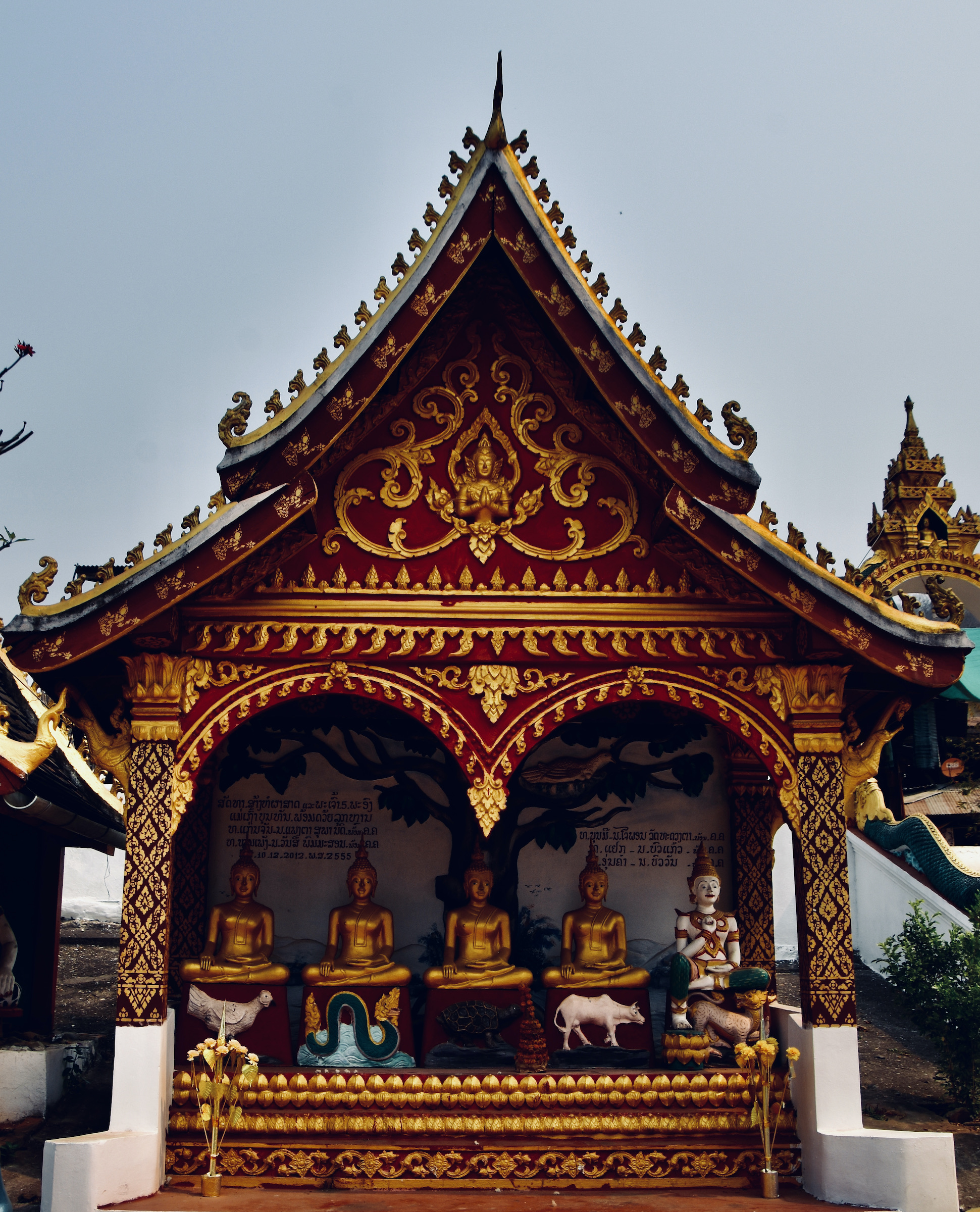
As is this fascinating tableaux of Buddha with nine nagas over his head, four guardians and a number of German shepherds. I don’t recall seeing any other representation including dogs.
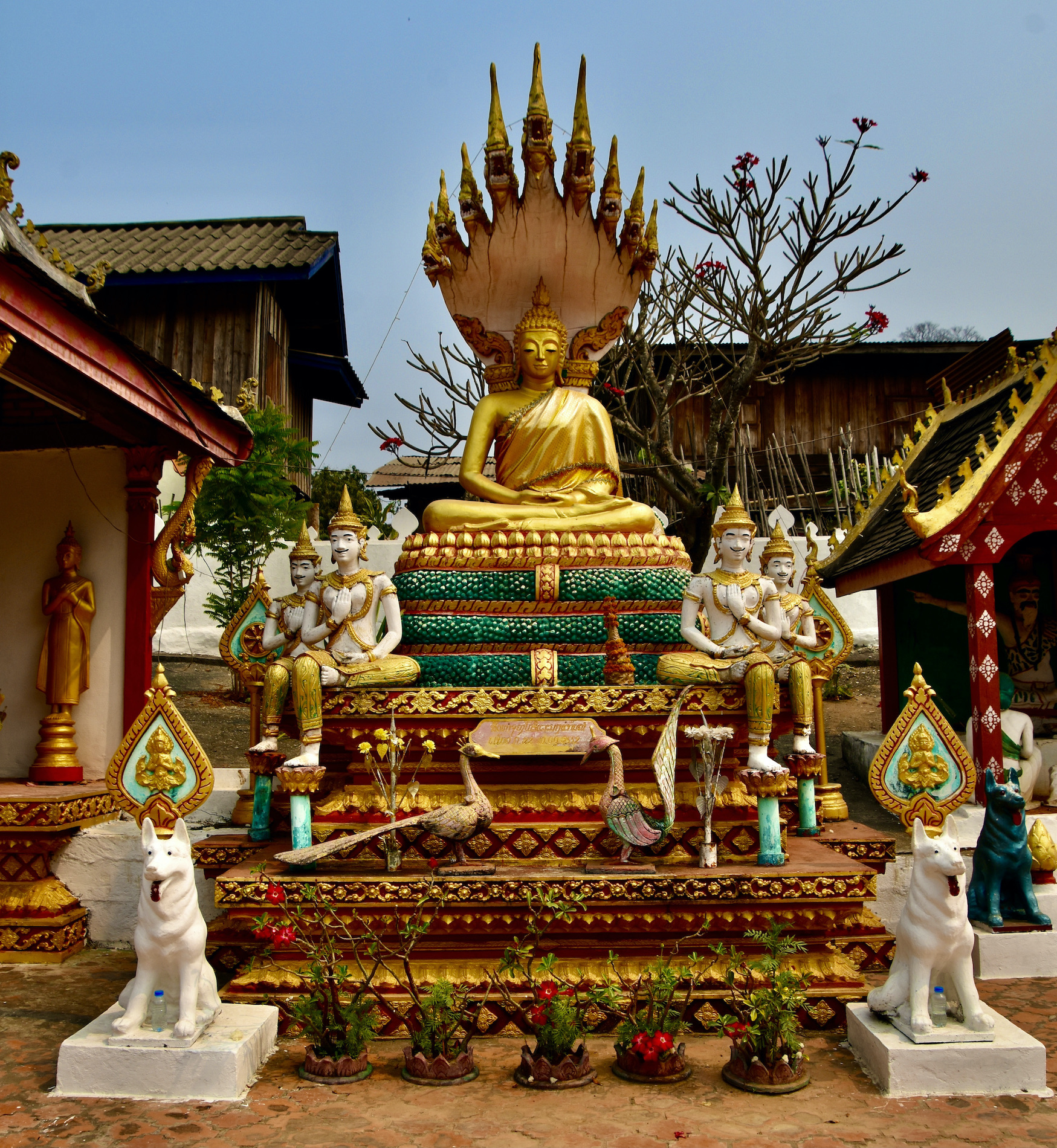
There are also statues of holy men; this one pointing the way to the woman who prays before him.
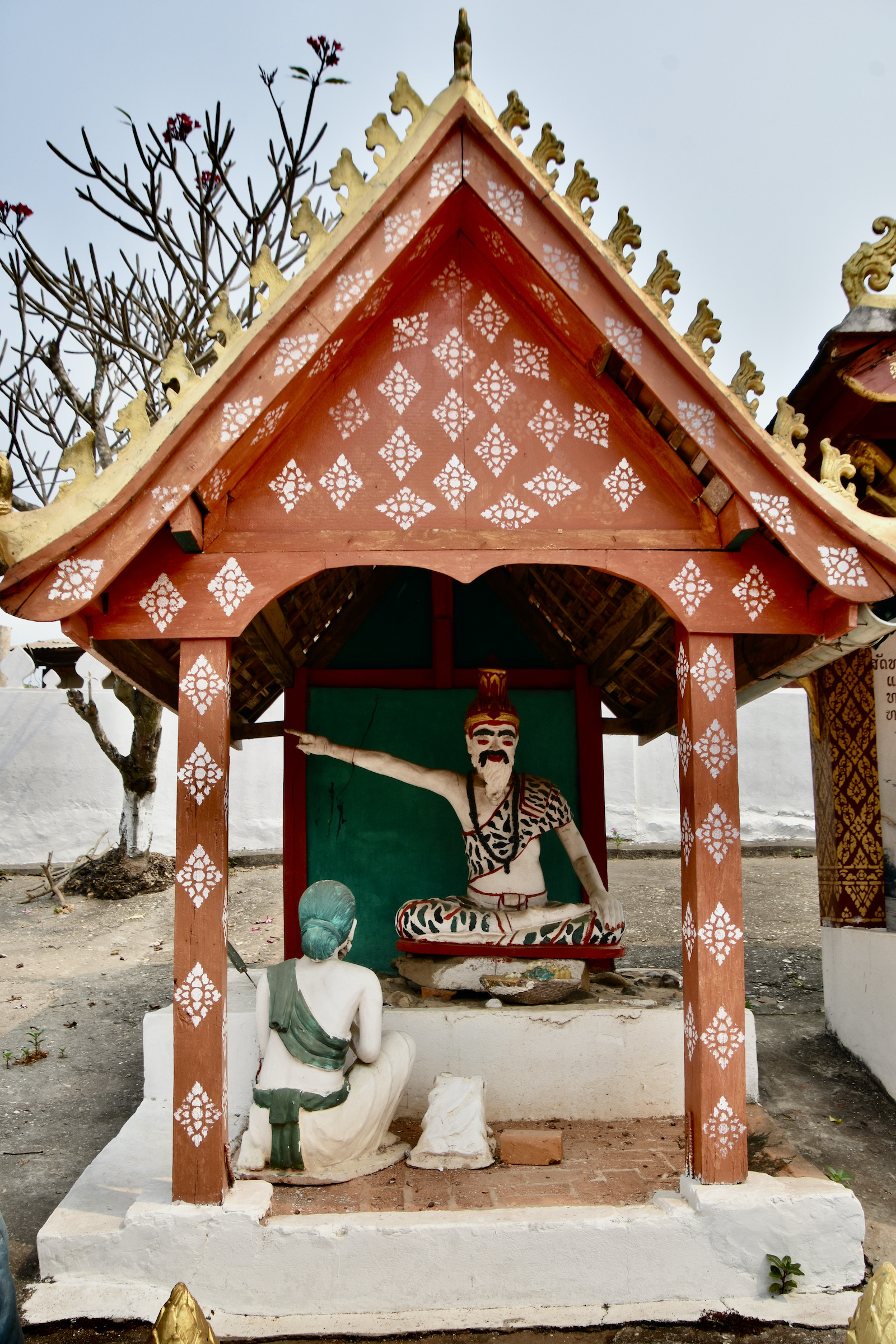
And this one simply a hermit according to Ta.
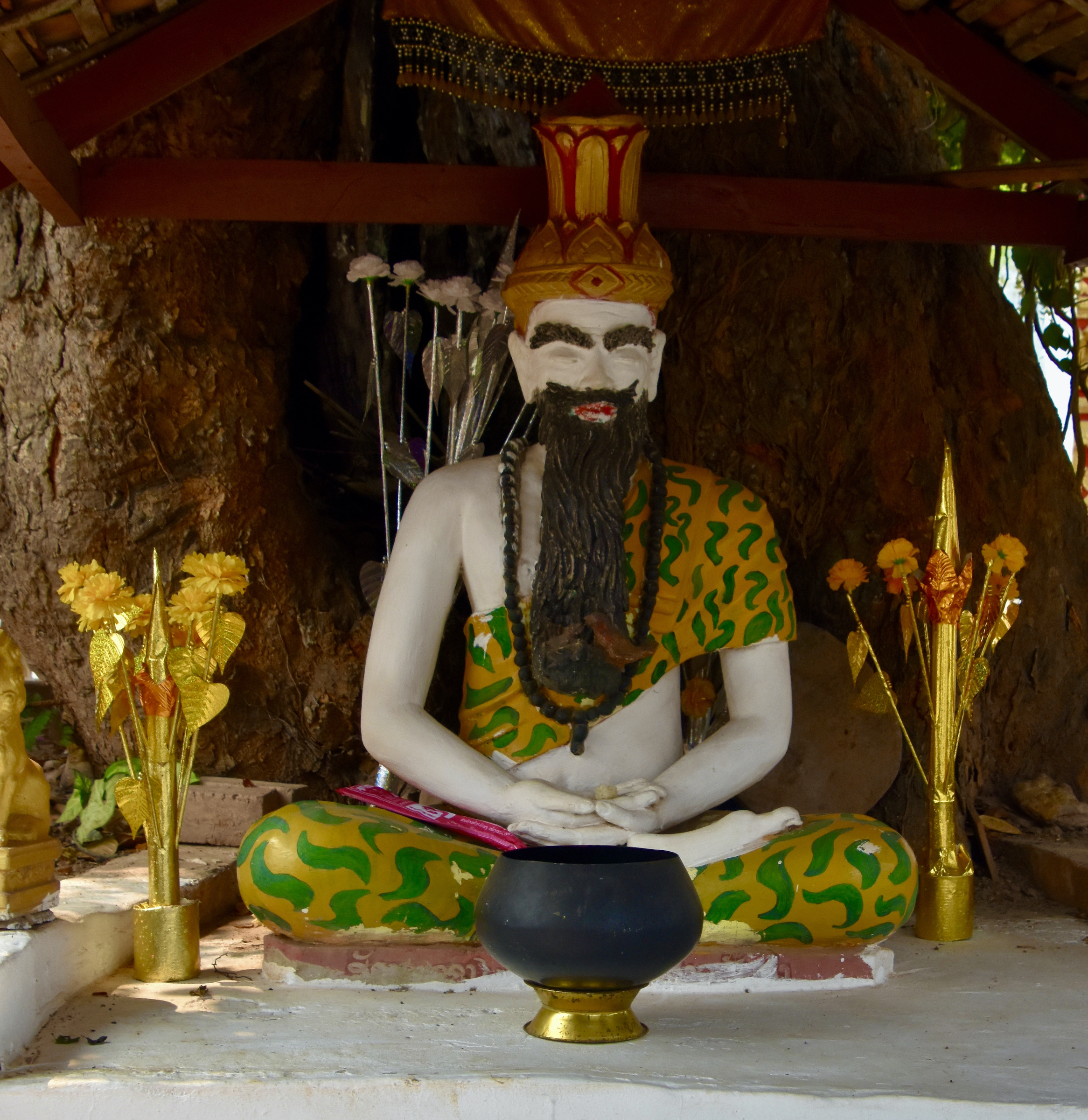
I found it amazing that this small Mekong River village could have constructed this type of complex given the apparently very limited resources available to them.
It was time to re-embark and continue our way up river to our next stop at the Pak Ou caves. While we had been exploring the village Claude had been trying his luck with his fishing gear, but to no avail. Not one of the 850 species of fish found in the Mekong River had any interest in his offerings.
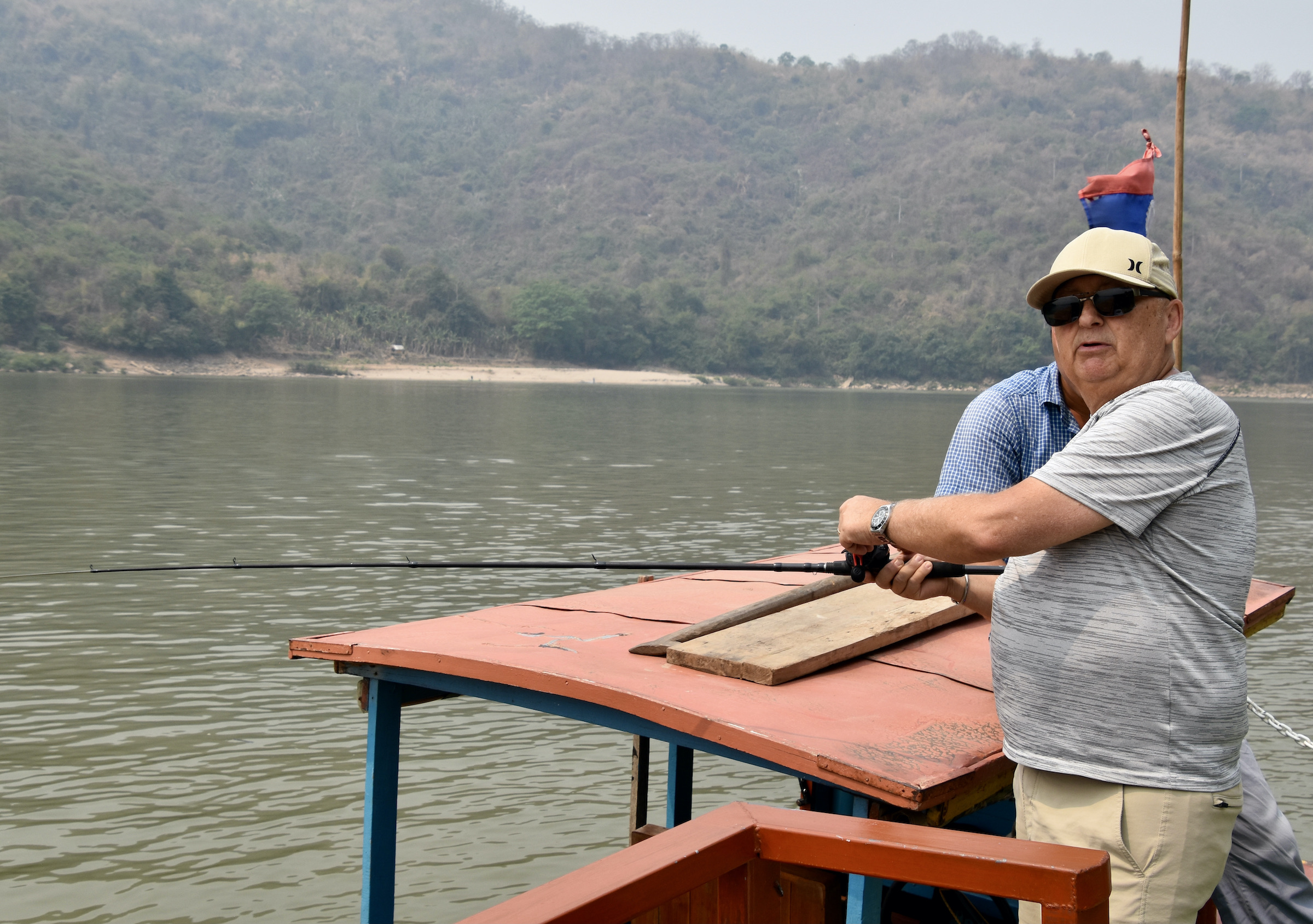
Continuing on our way we passed a number of small river freighters including one with this monk peering out. I couldn’t help but notice the incongruity of the satellite dish right above his head.
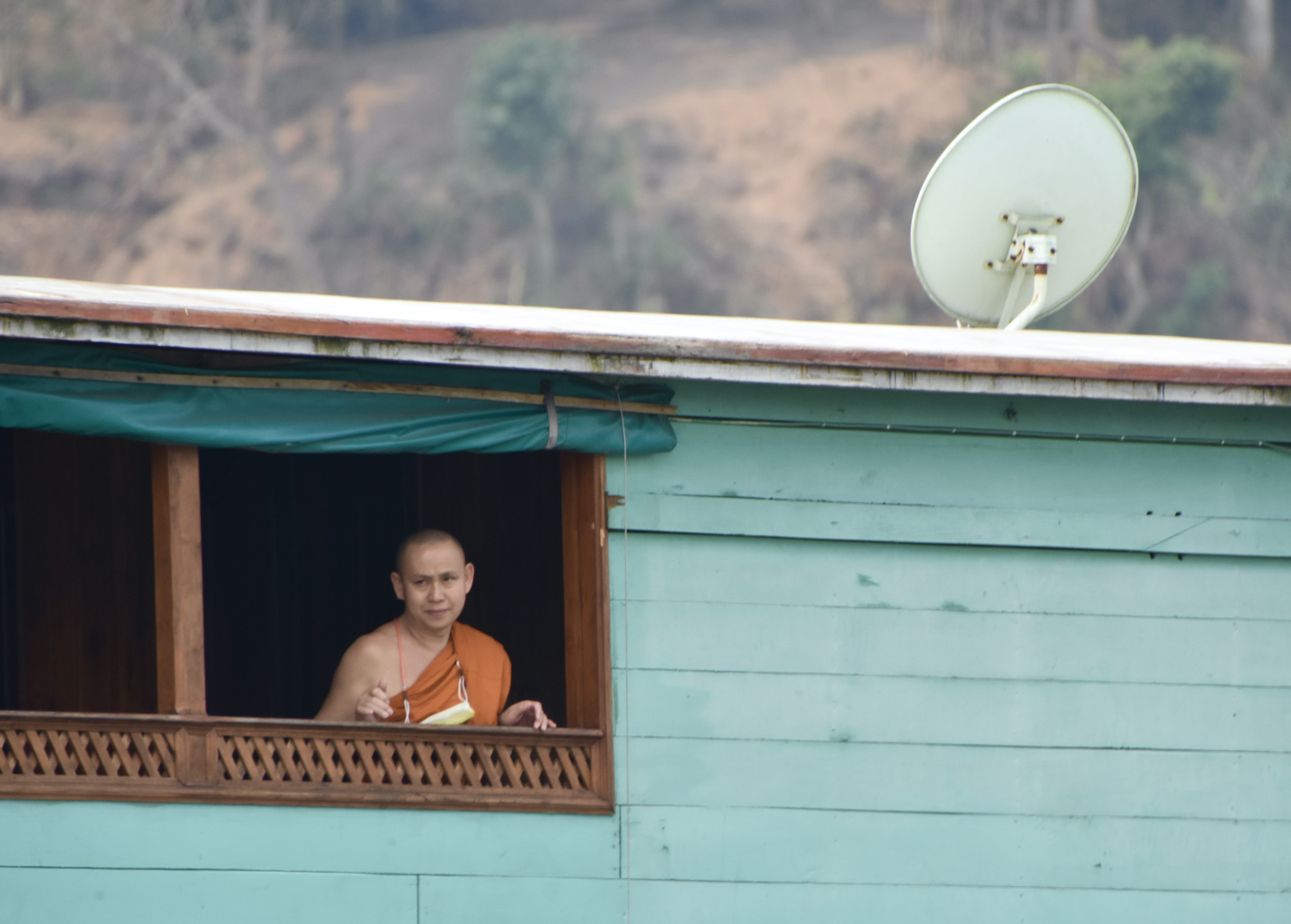
We also started to see quite a few water buffalo that were doing what water buffalo love to do – wallow in the mud.
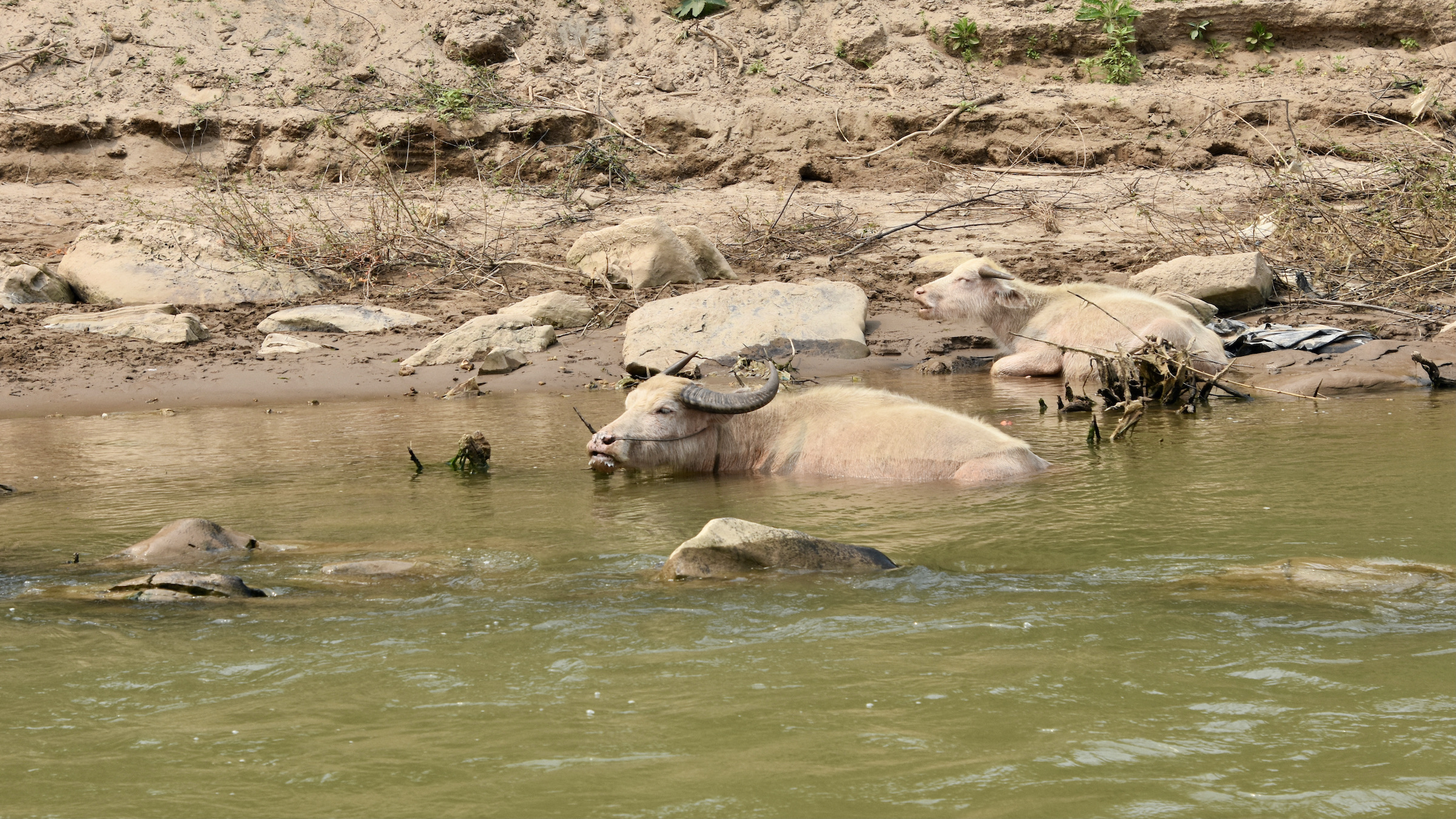
As we neared the Pak Ou caves the terrain became much more mountainous and created some nice reflections on the water even given the constant haze.
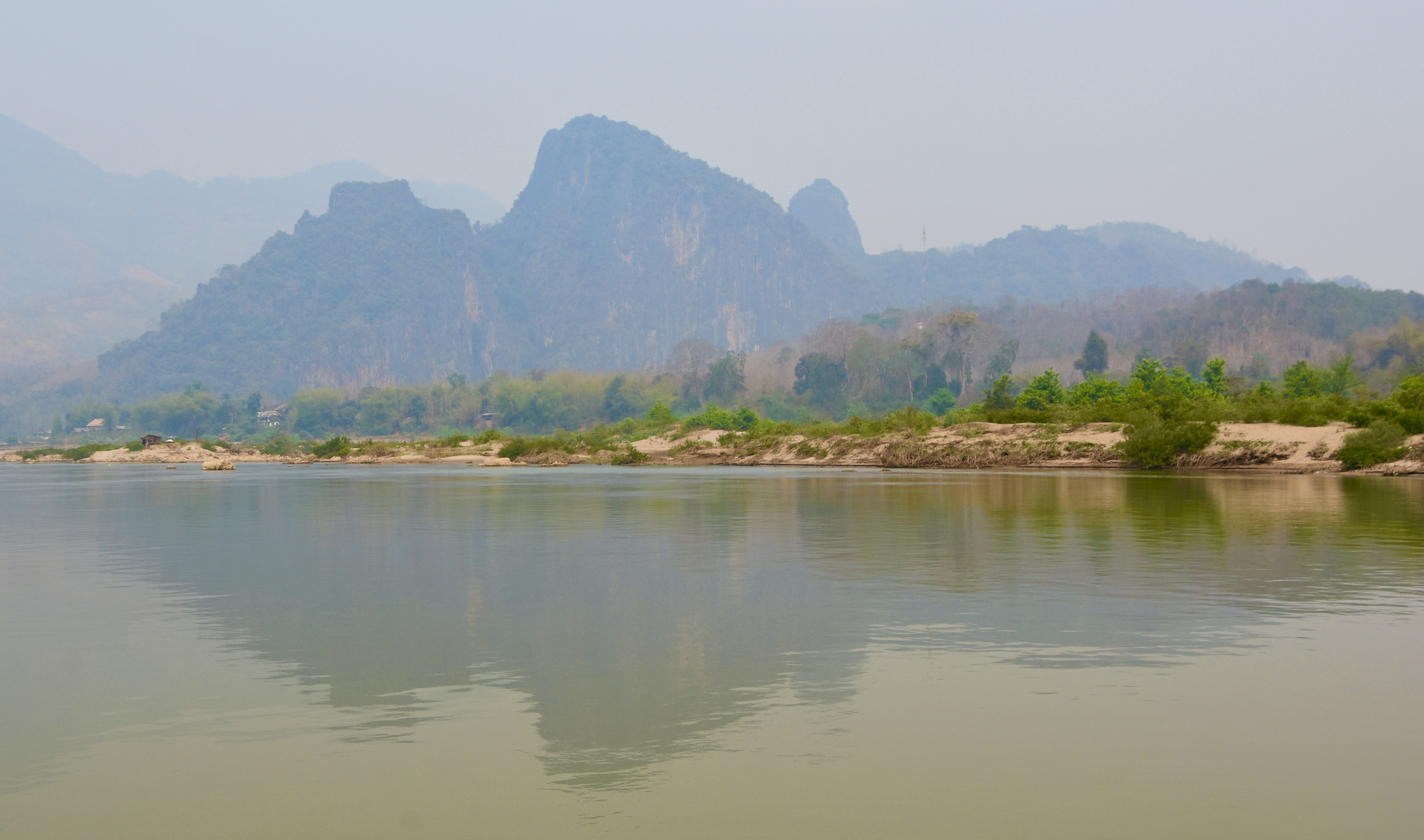
Pak Ou Caves
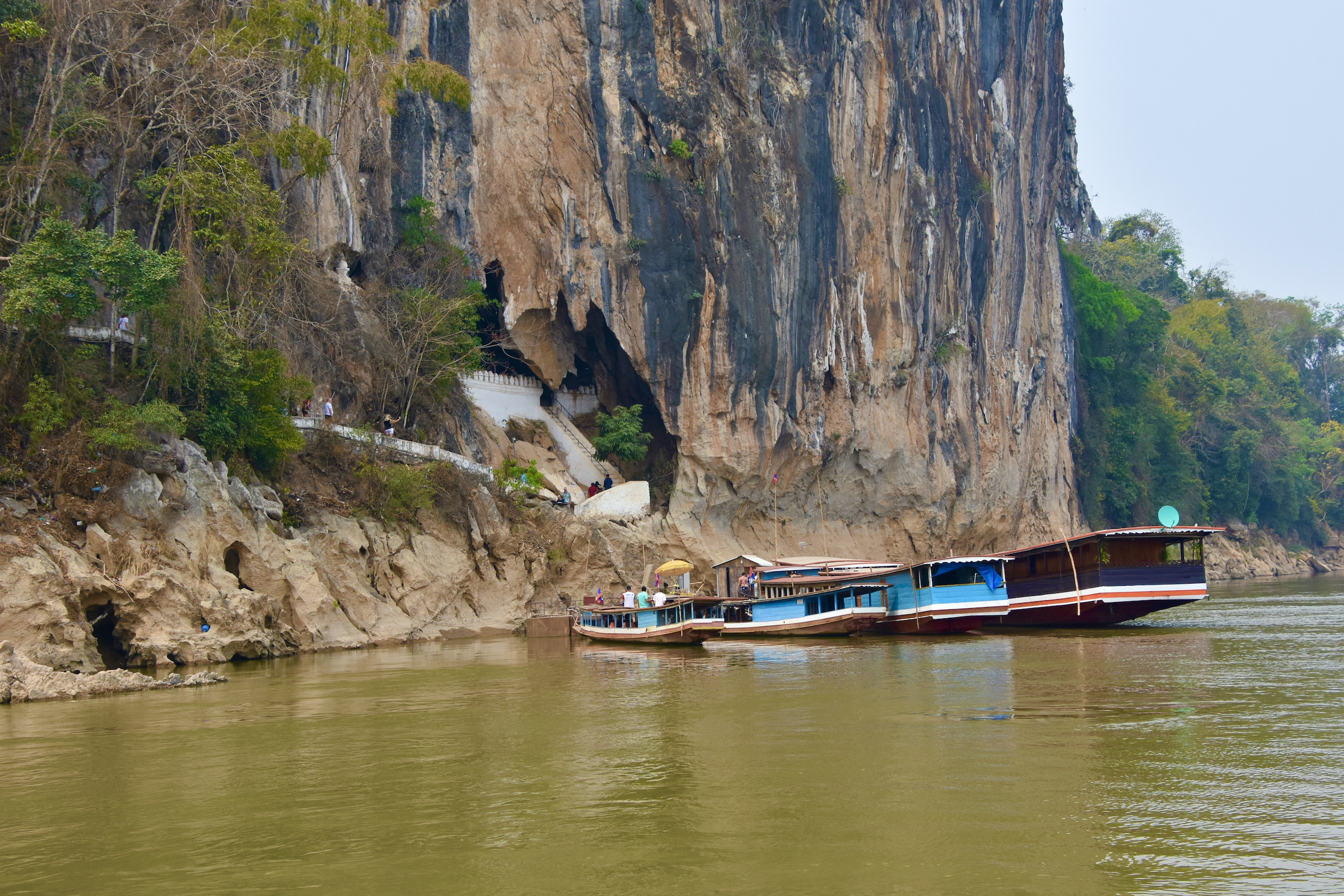
The Pak Ou caves are one of the top tourist destinations outside Luang Prabang. There is an upper and a lower cave and each is known for the thousands of images of the Buddha that have been left there by locals and pilgrims. However, I can find no historical or legendary reason for why this practice started in the first place. So it is the statues themselves that are the draw.
This is the first time we have run into any other tourists on our Mekong River cruise. Apparently you can reach the other side of the river by road and take a ferry across to the this landing spot. We all hop out and Claude gives us as much time as we need to explore the place. He does warn that the climb to the upper cave is a bit strenuous and that given the heat and the haze it might be advisable to be satisfied with just seeing the lower cave.
Well the lower cave really is something. Here I am looking down at our group from one of the many vantage points. As you can see it’s not that crowded.
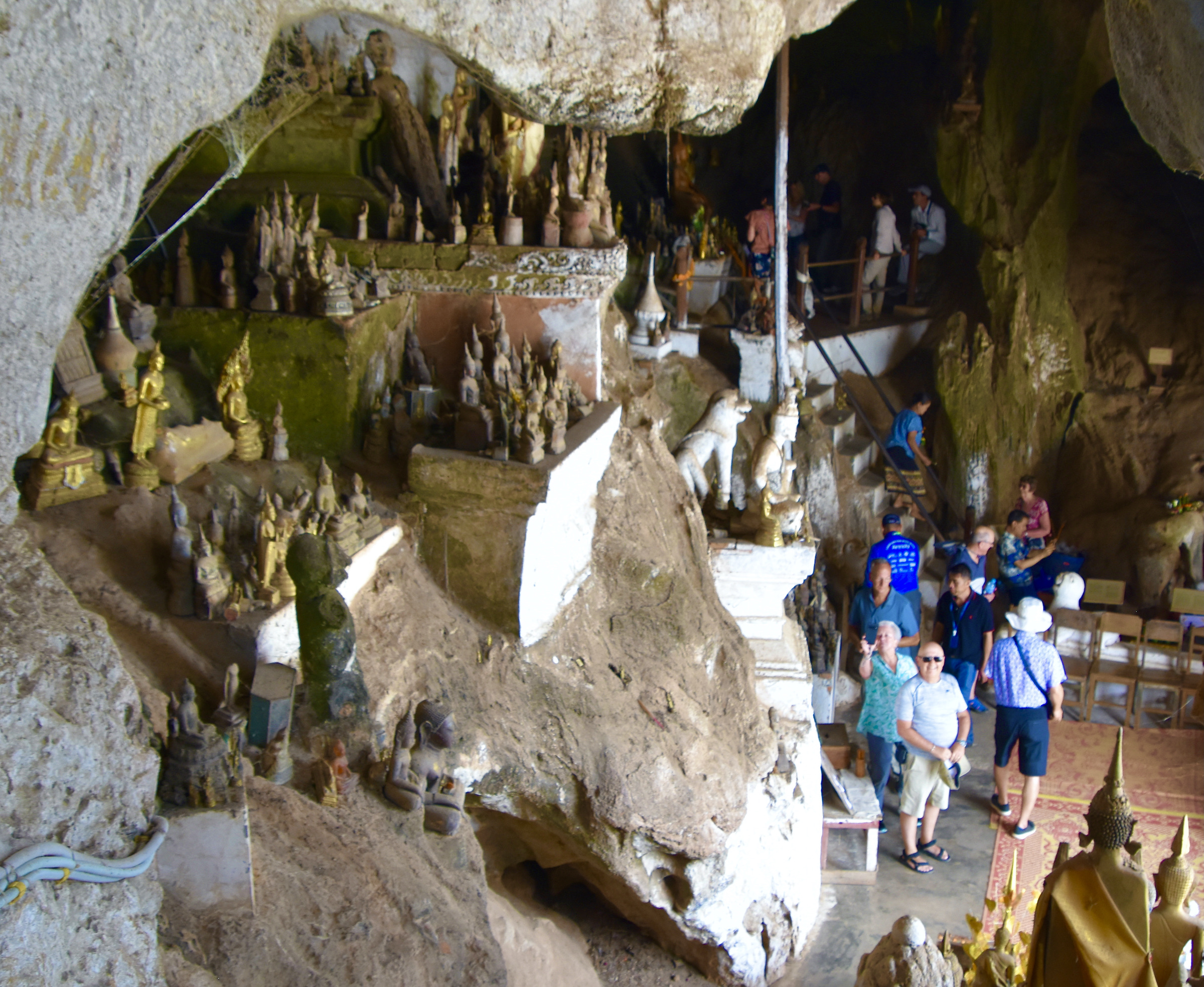
This is a closer look at some of the Buddhas, these all in the standing position.
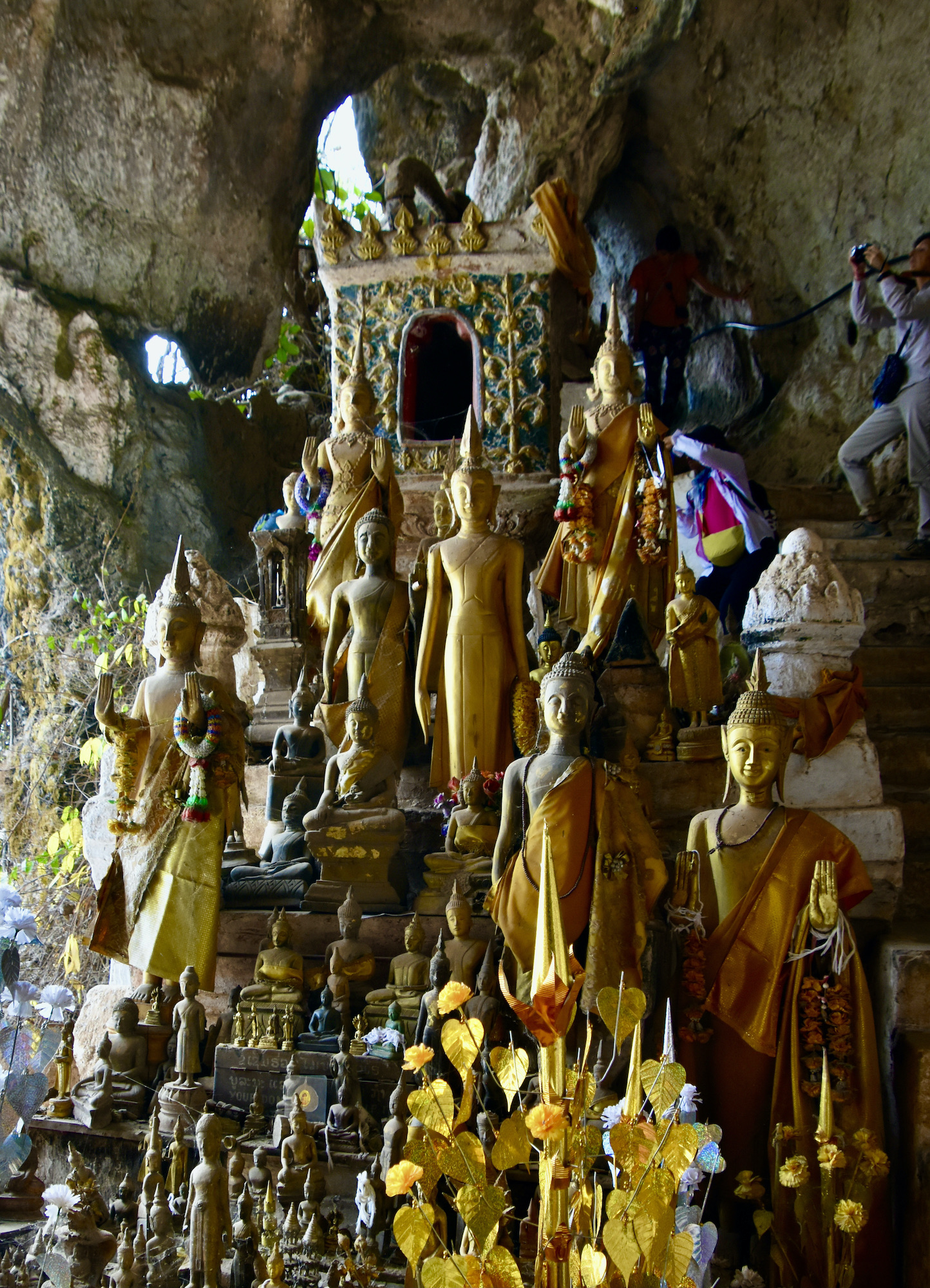
Of course I ignore Claude’s warning and do climb up to the upper cave – I didn’t come this far around the world not to do this. There are far fewer people up here and fewer Buddhas, but it definitely has a more sacred atmosphere as there are a number of people worshipping in the deepest part of the cave.
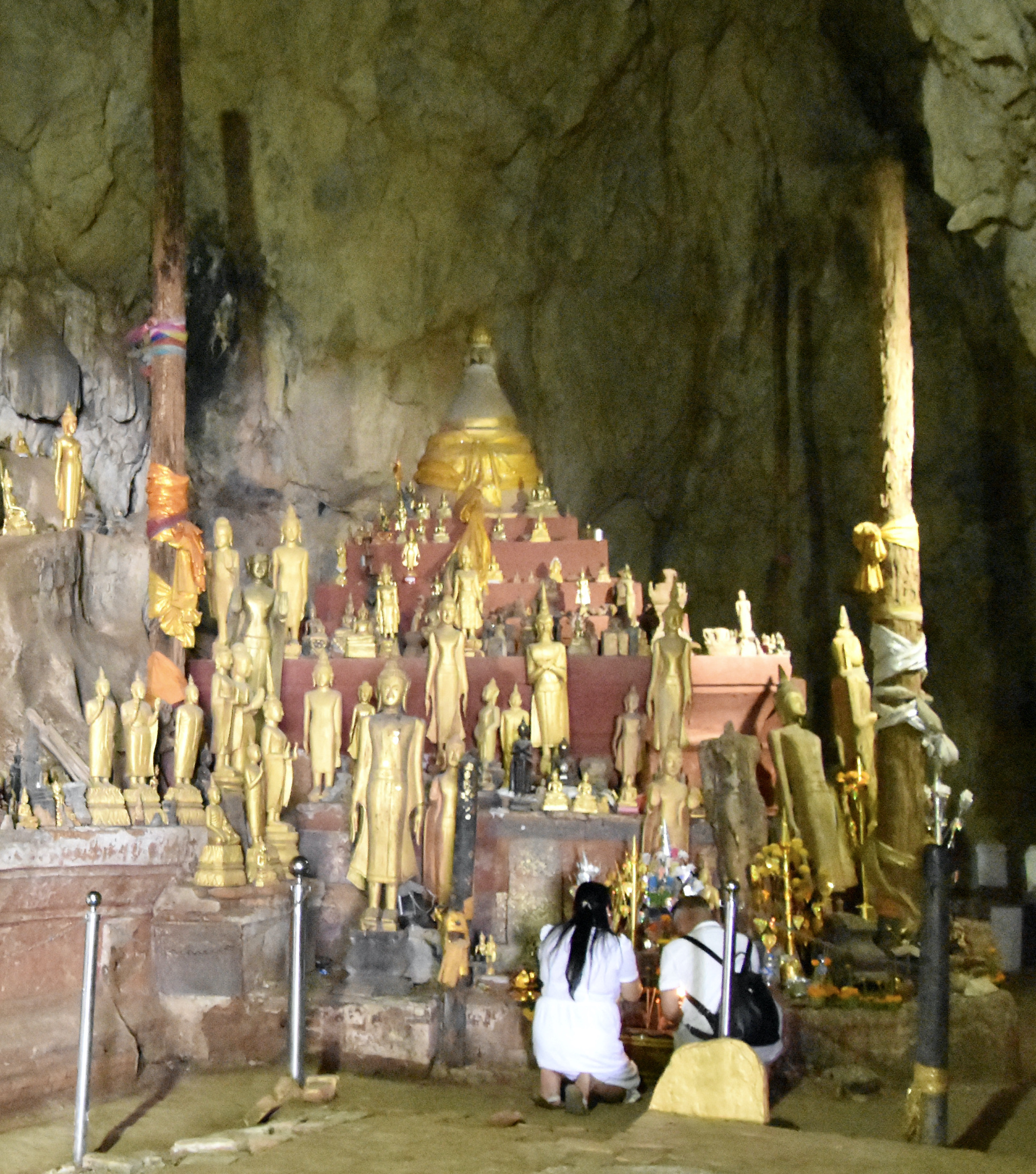
There’s also another holy man who looks very pensive, almost world weary. I guess he came all this way to get away from other people as these hermits do, only to find out they had followed him up to this high place of reflection.
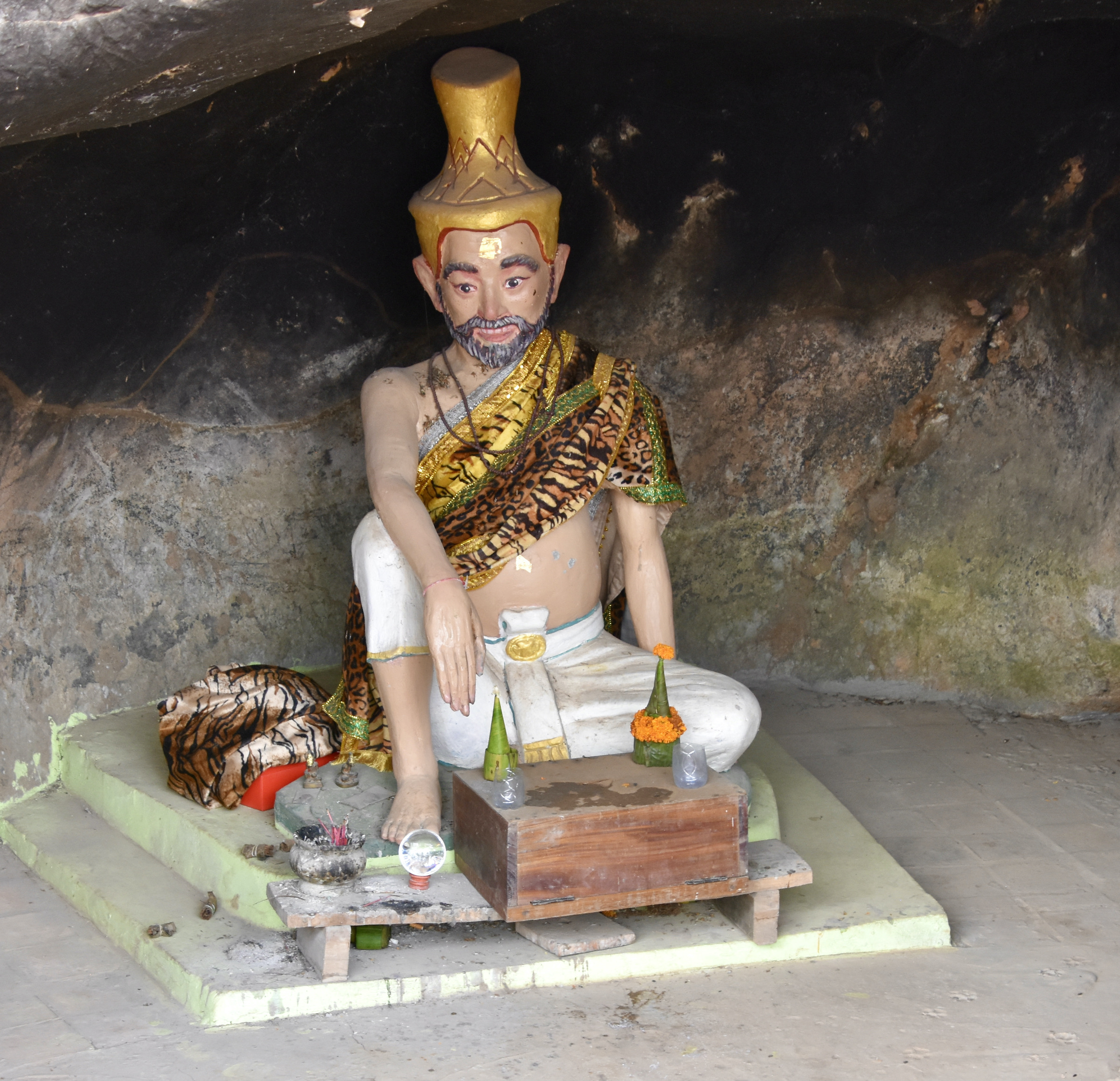
You are rewarded with a great view from the upper cave and I’m not just talking about Alison.
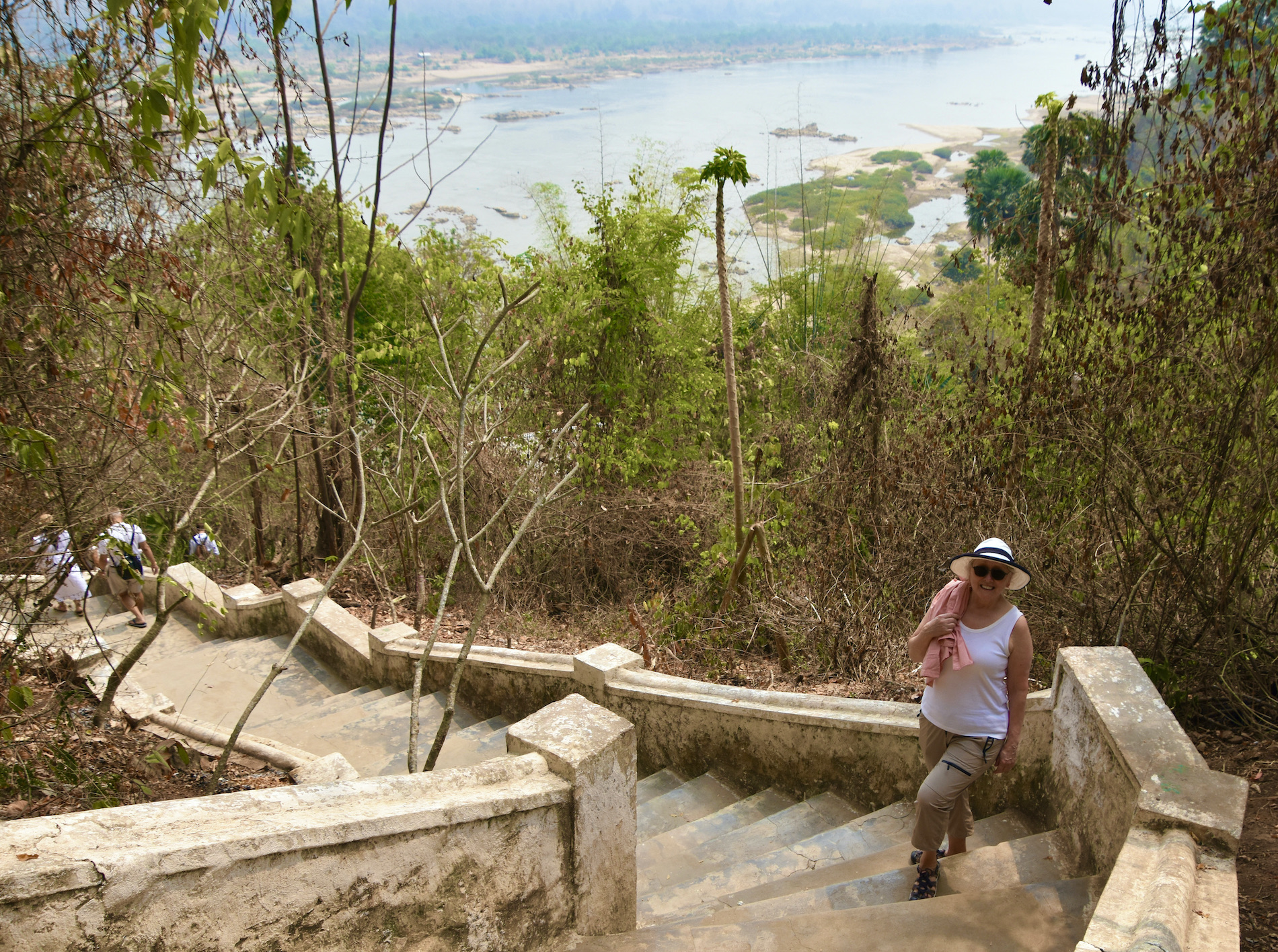
Back on board we took a short trip to the other side of the Mekong River and disembarked for lunch at one the restaurants at the end of the road from Luang Prabang.
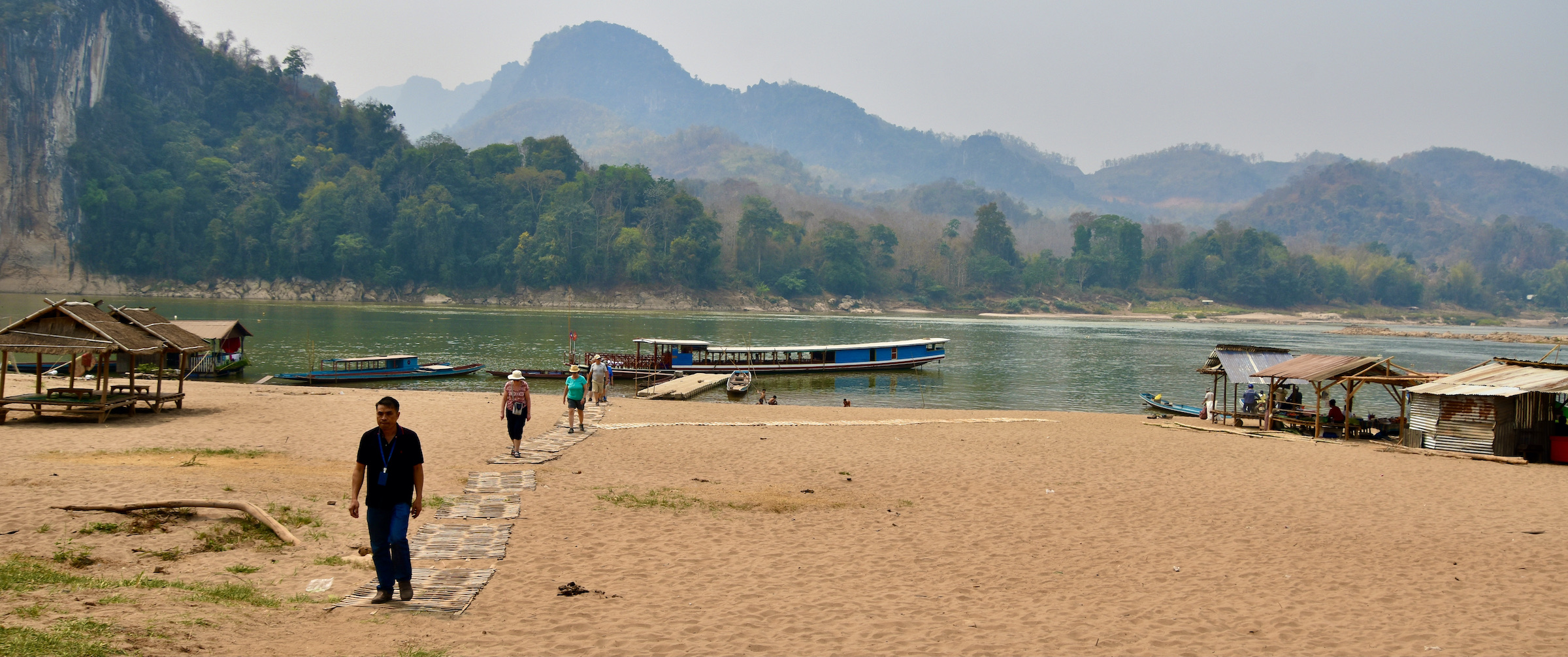
After a very traditional Lao meal we got back on the boat and returned to Luang Prabang. Now going downstream, we got there a lot faster than on the way up.
We did see the first and it turned out, the only working elephant on the entire tour. If I had known that I would have taken better care to get a decent picture. So if you see an elephant in Laos don’t assume you will see others.
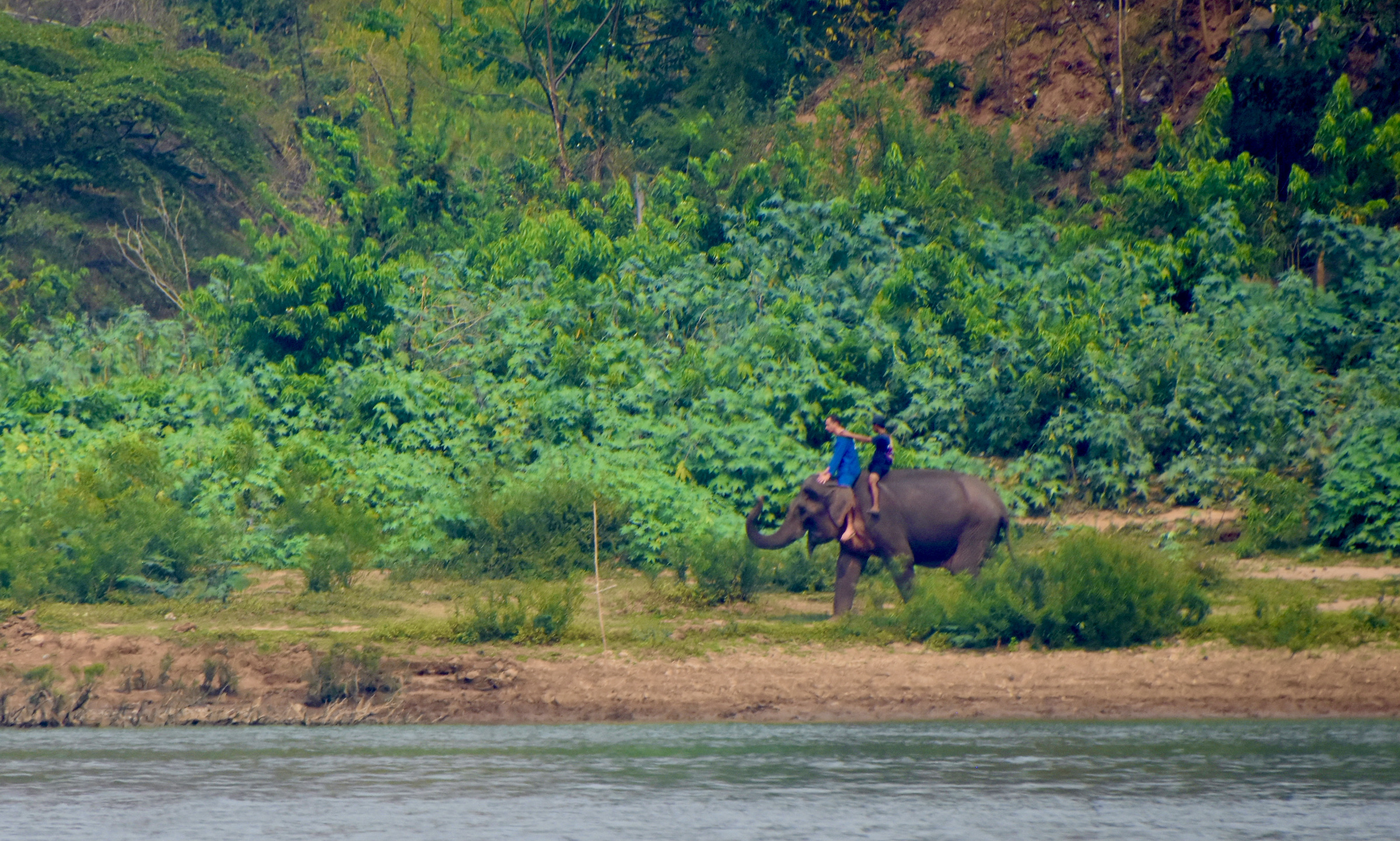
Even though Claude got skunked on his fishing endeavours, you know what they say about the worst day of fishing compared to the best day in the office. This was a great trip on the Mekong River and we will encounter it again in Vietnam and Cambodia.
In the next post we visit two traditional villages inhabited by the Hmong and Khmu people’s respectively. For me it was one of the highlights of the Laos trip and if you join us I’ll show you why.

